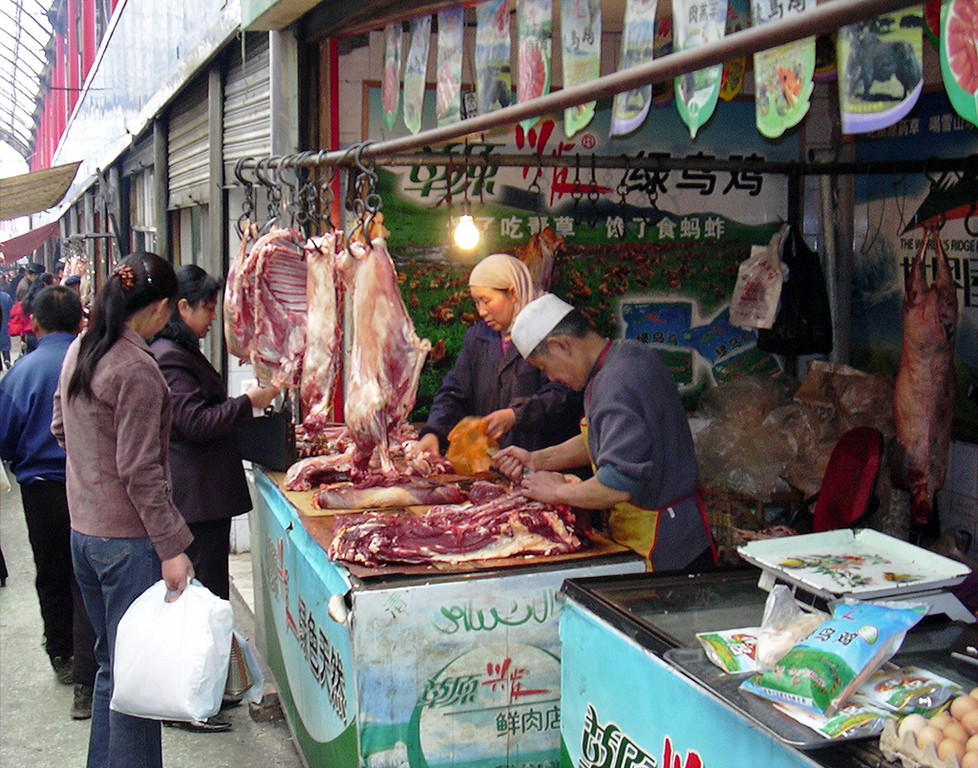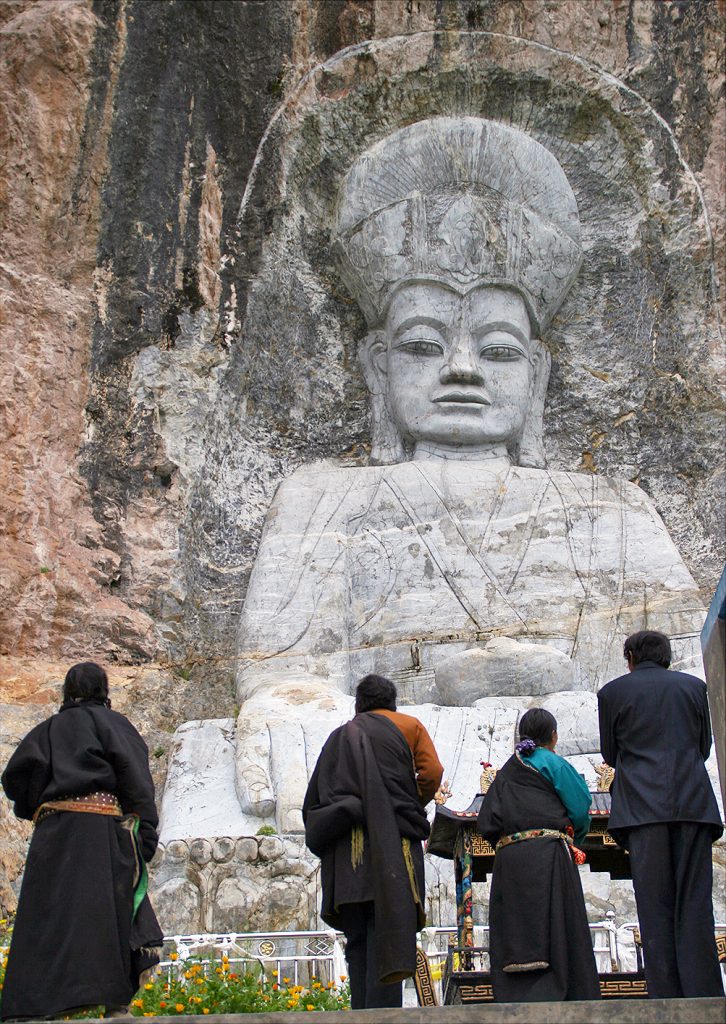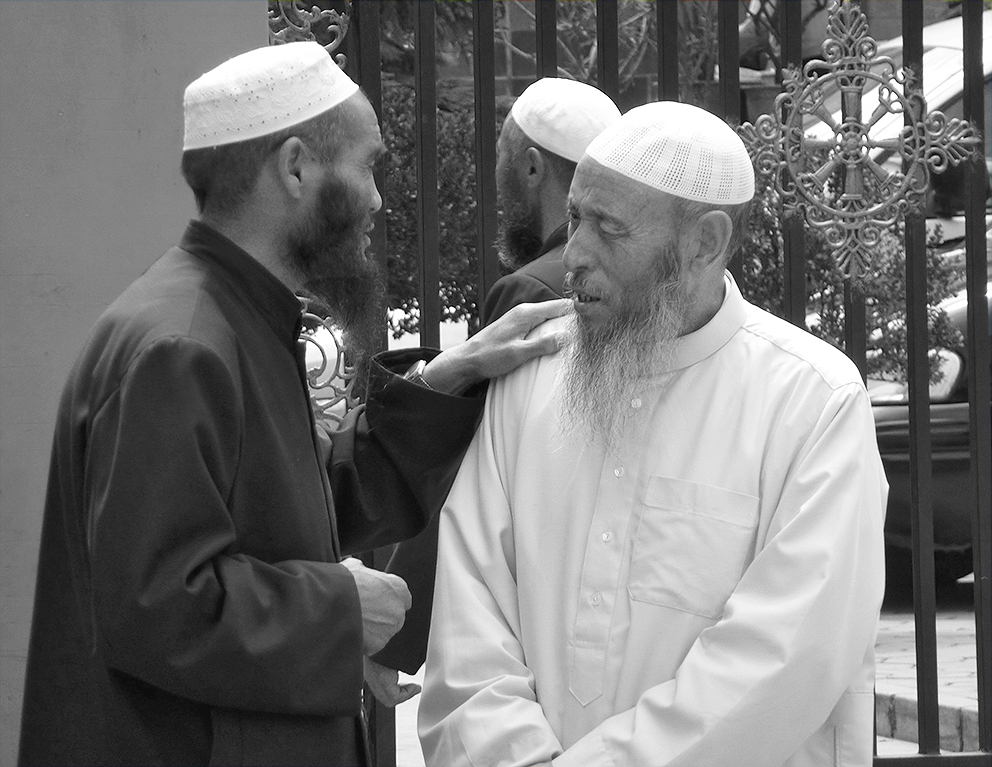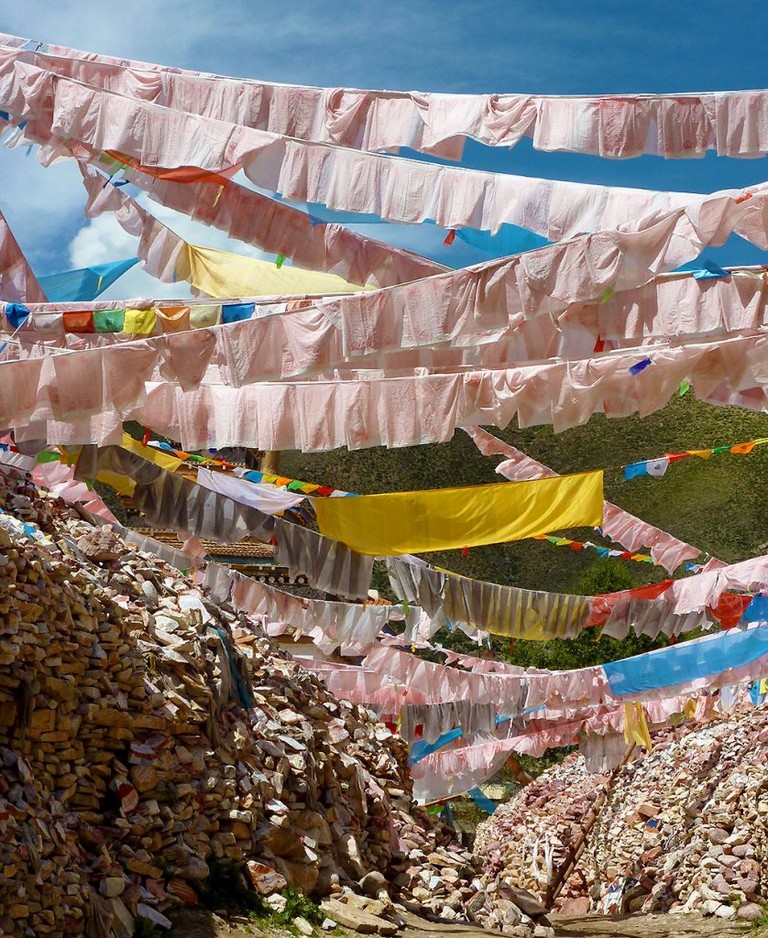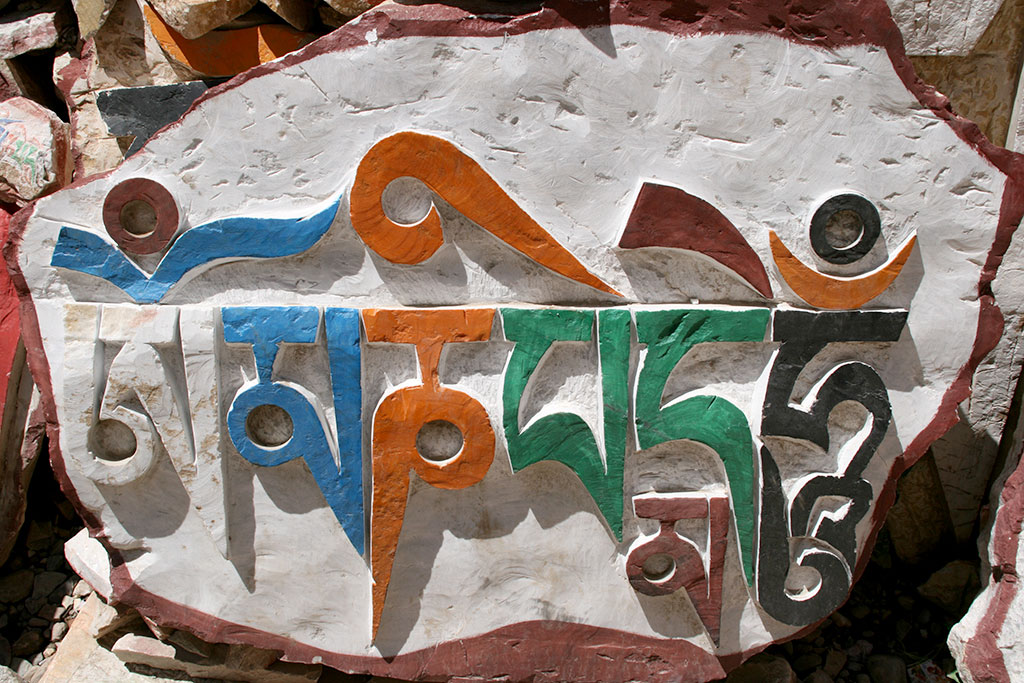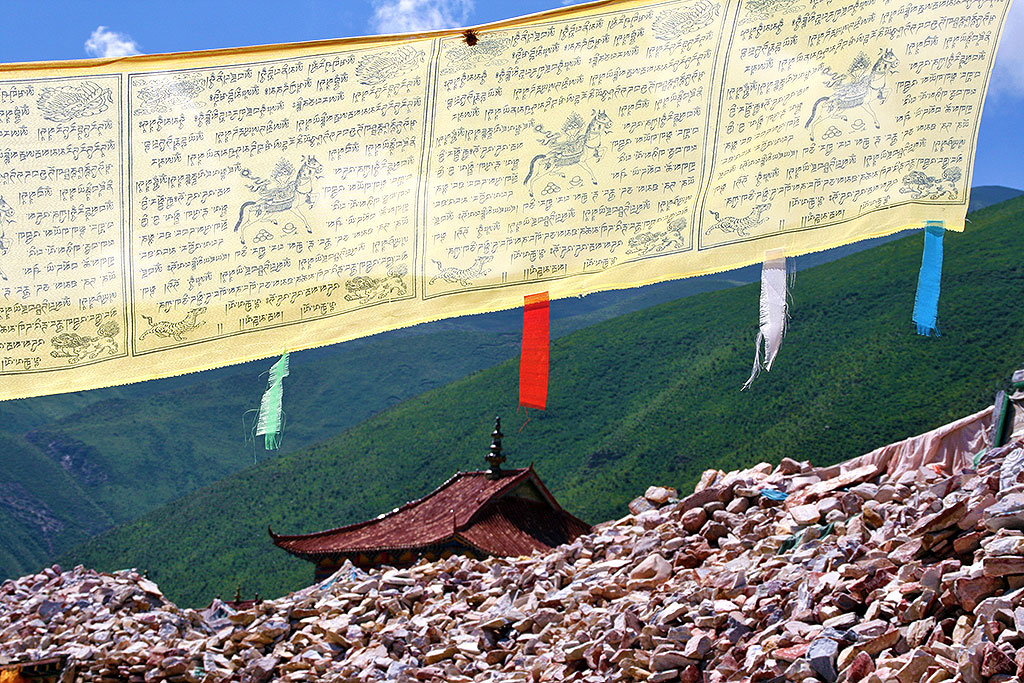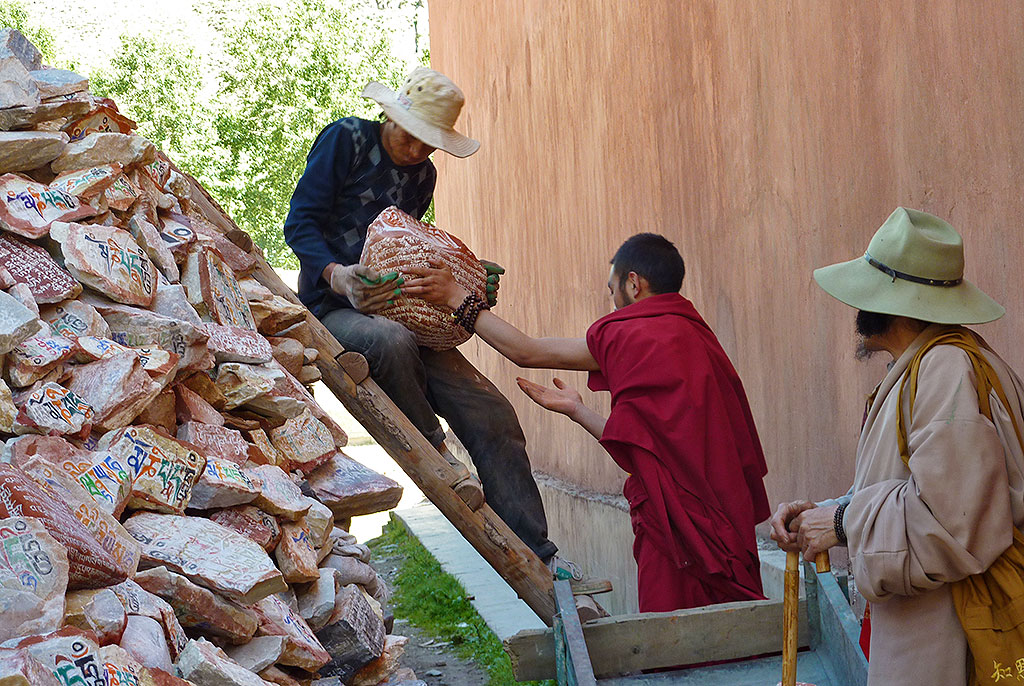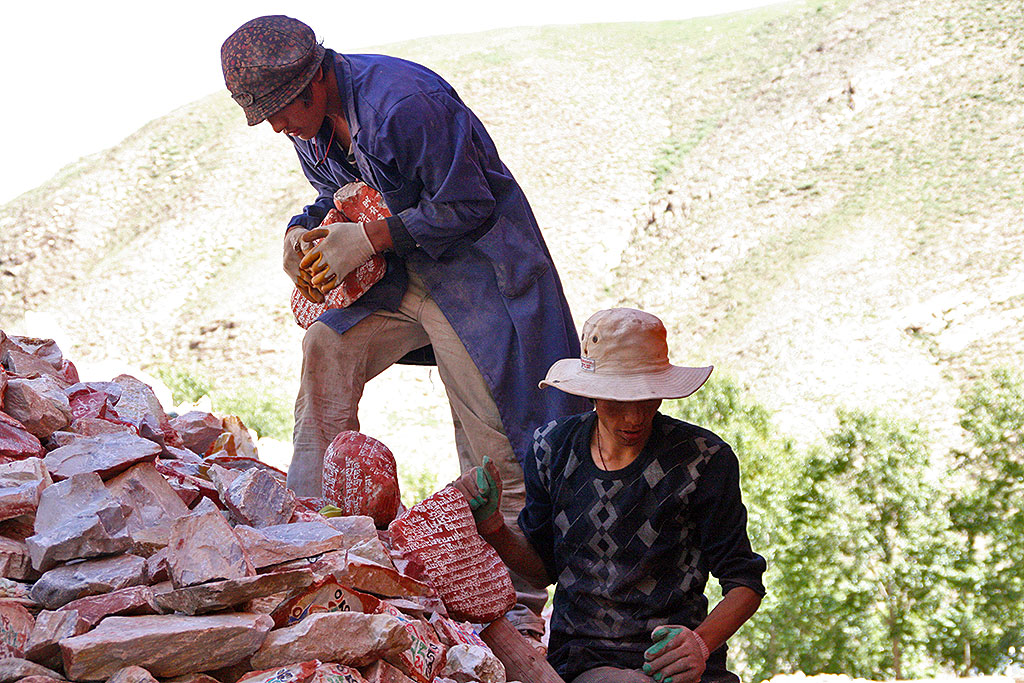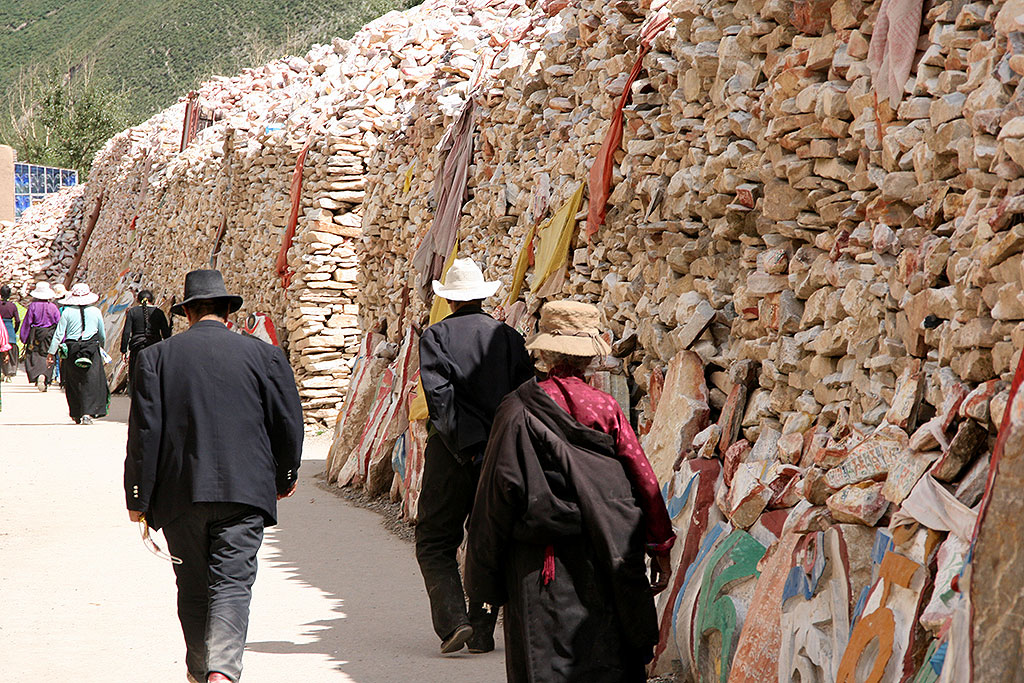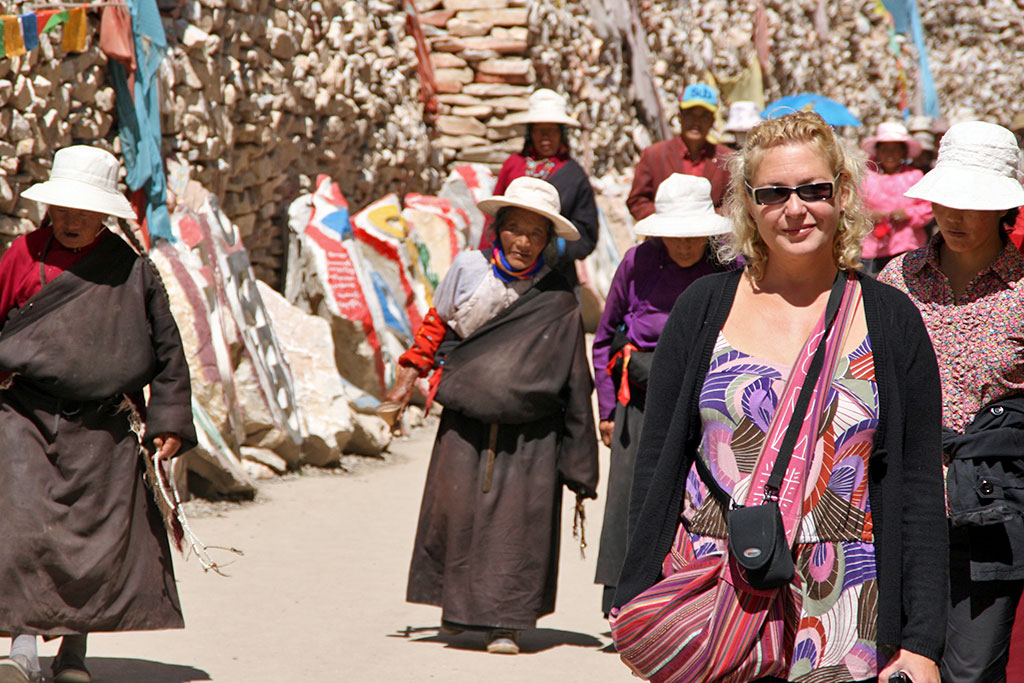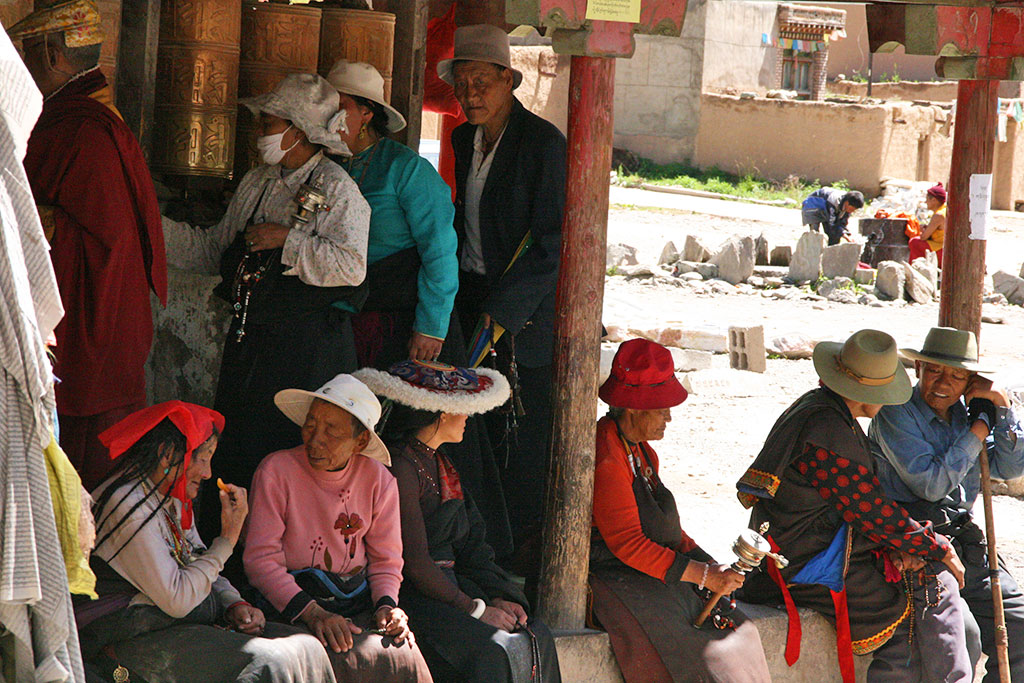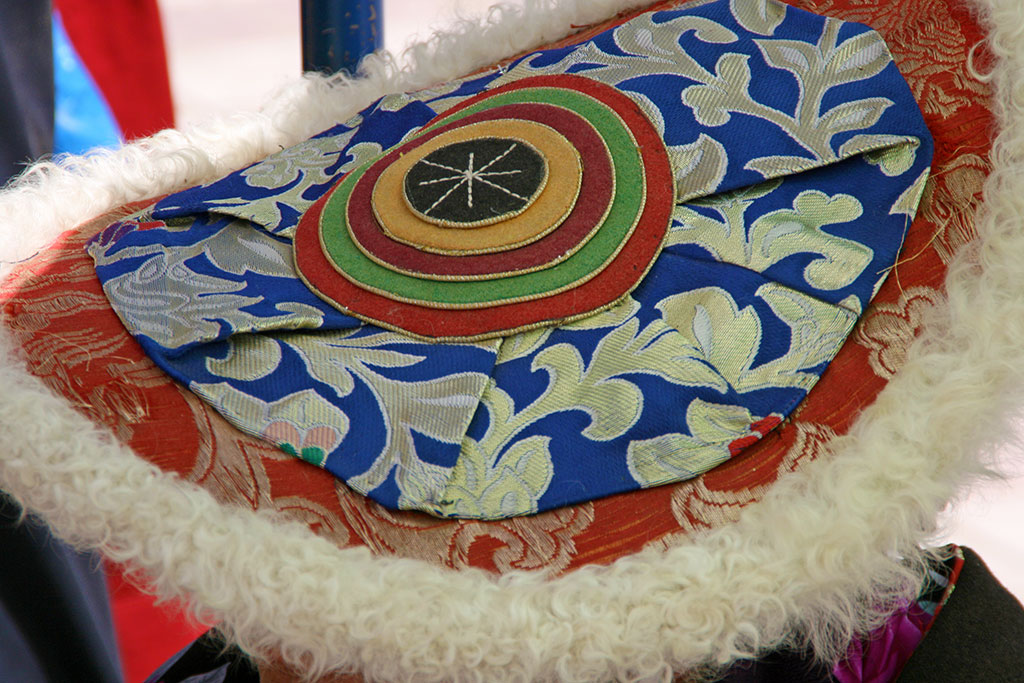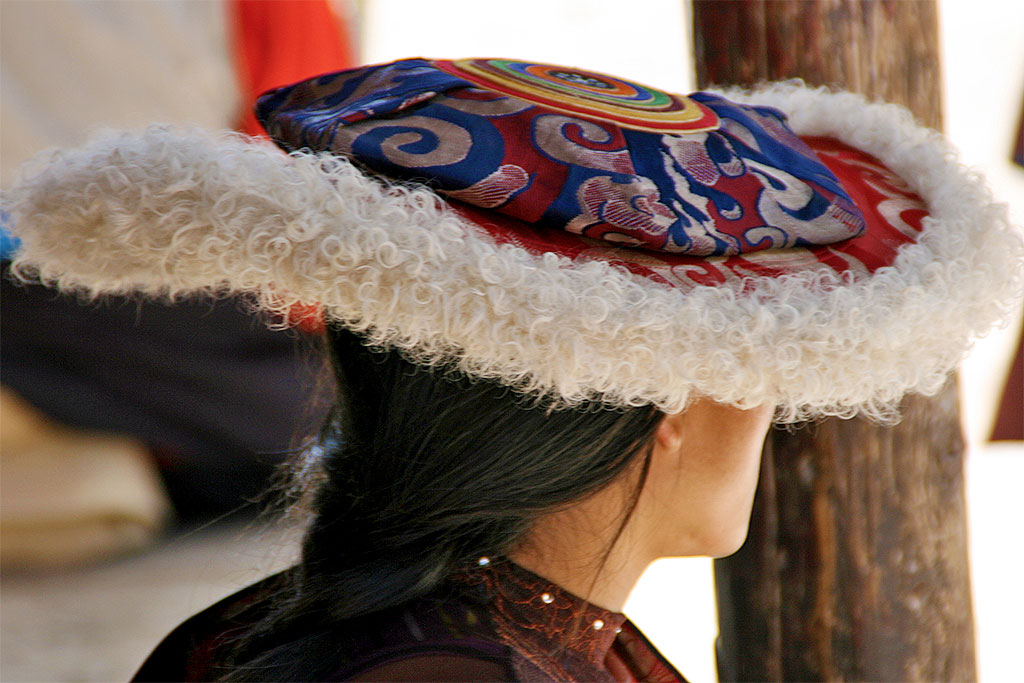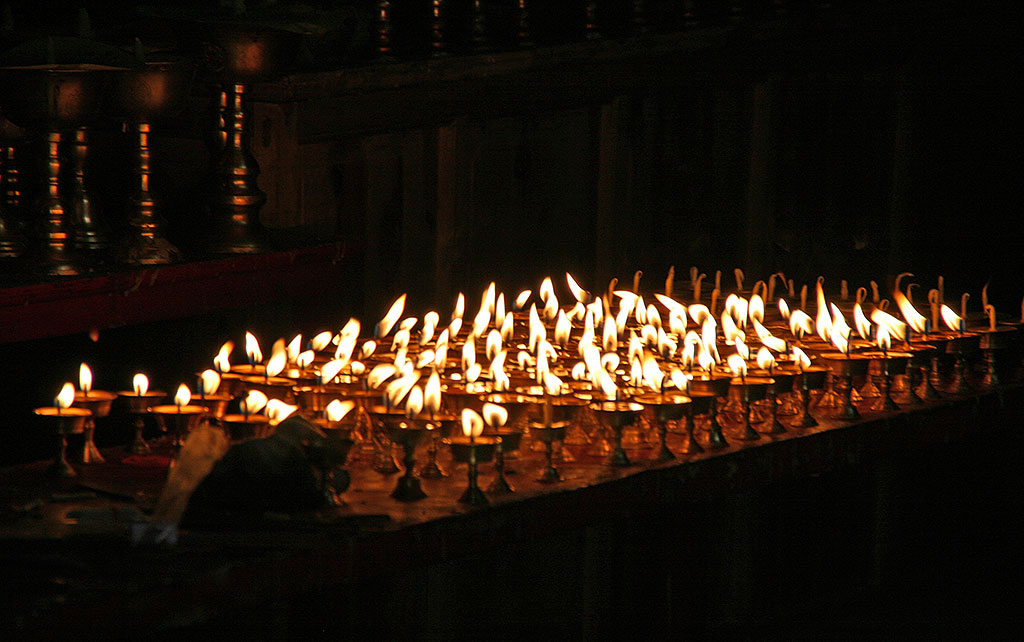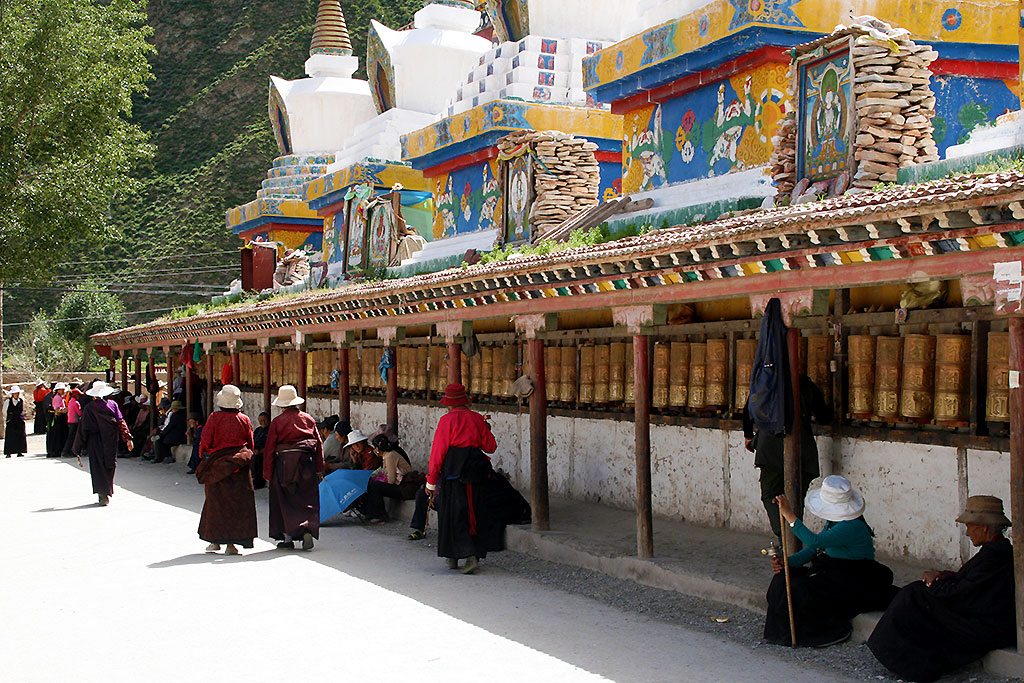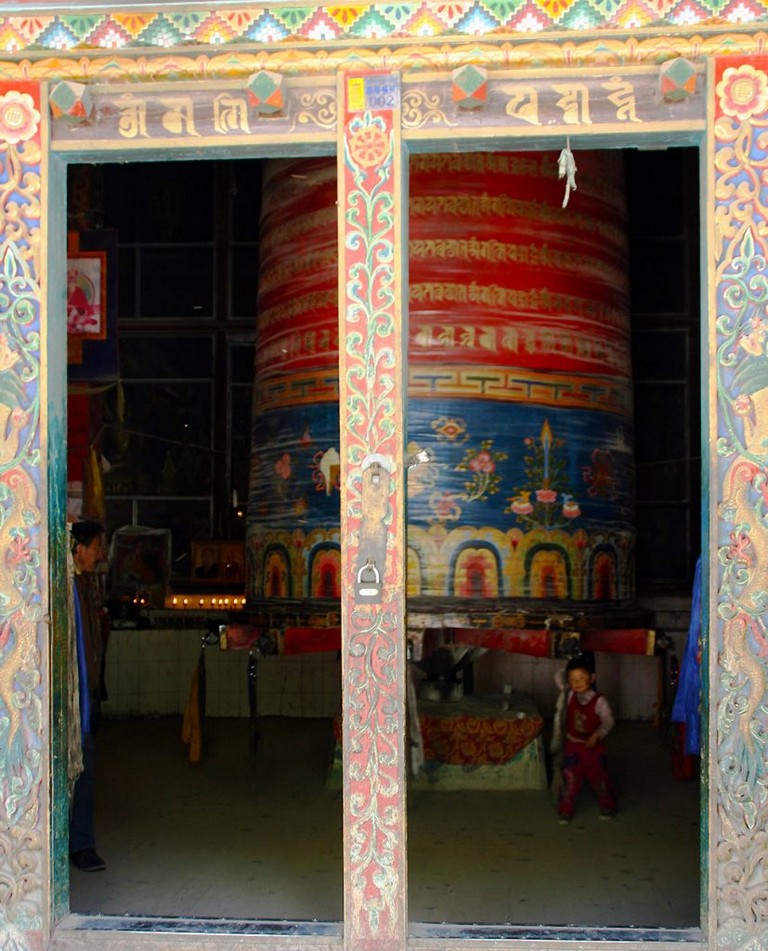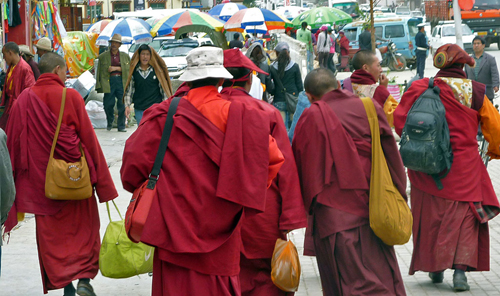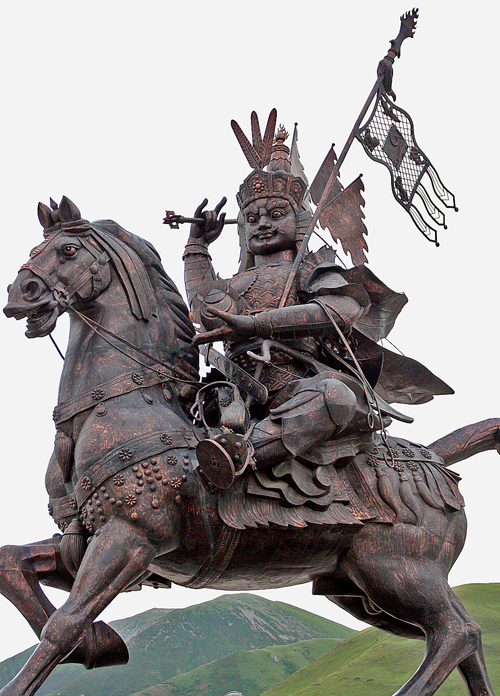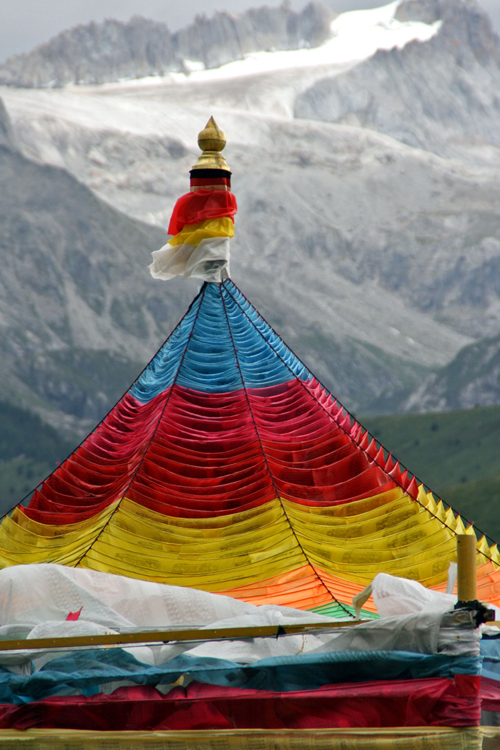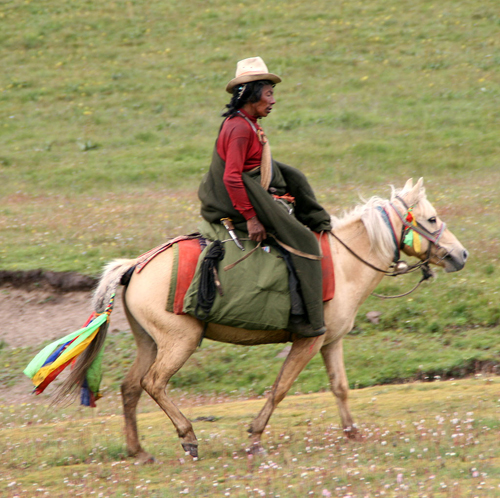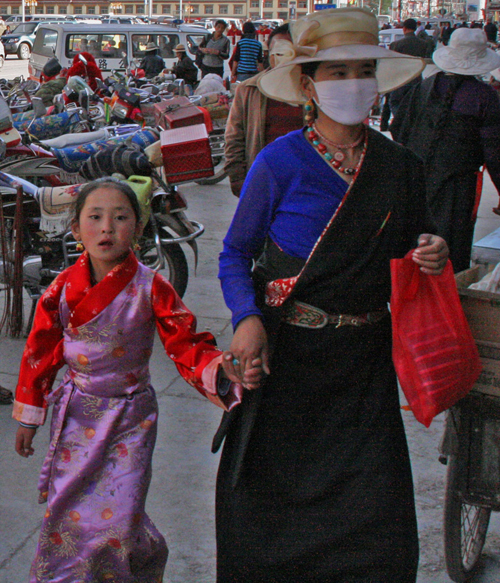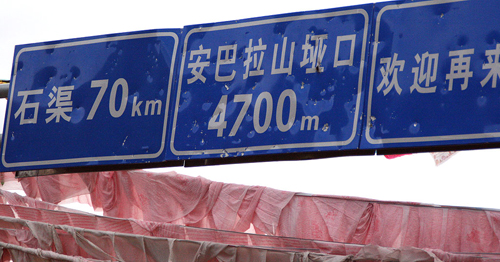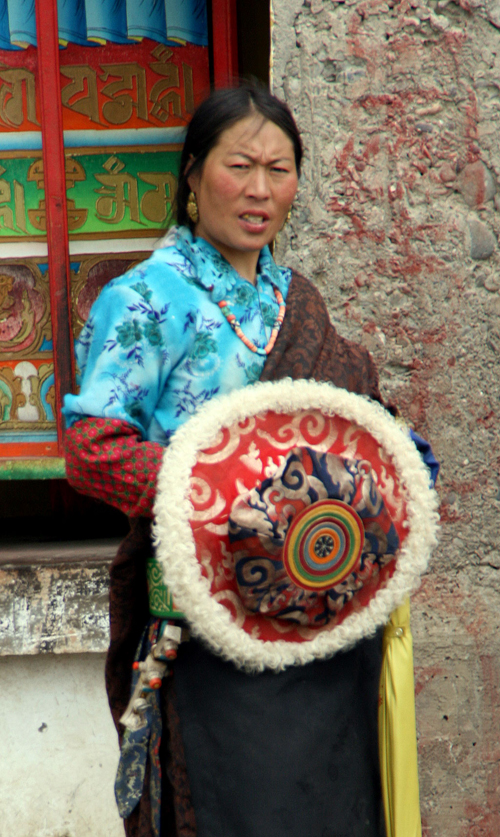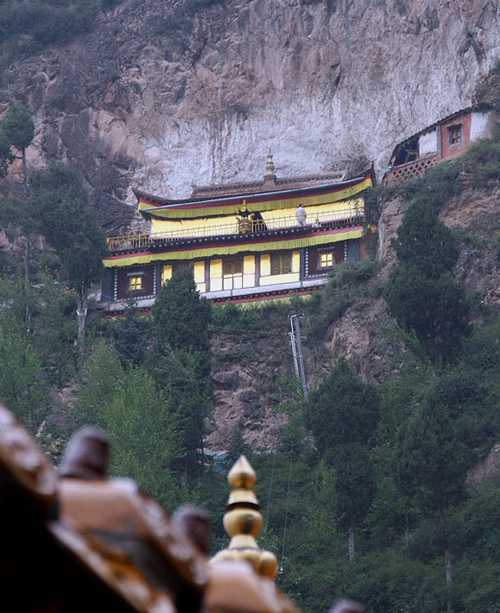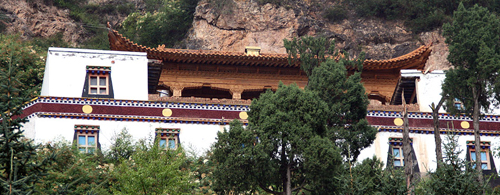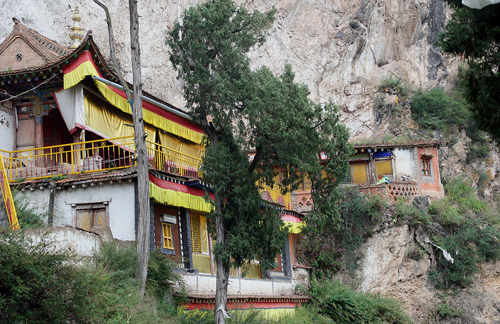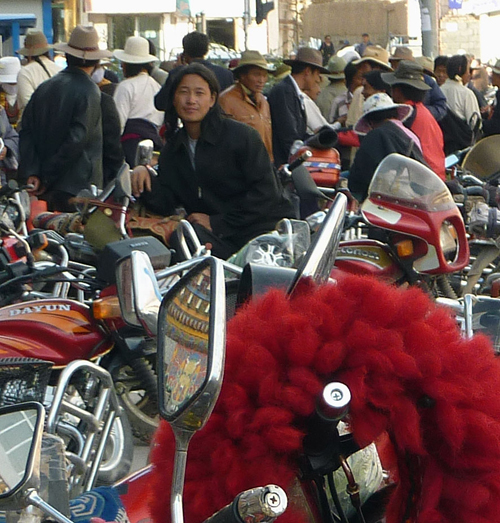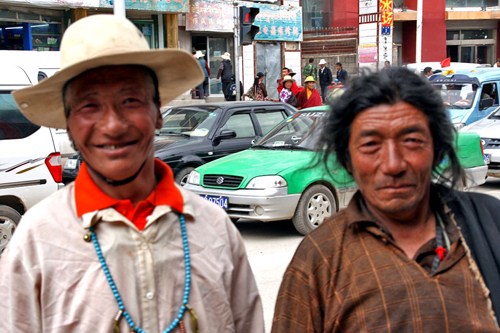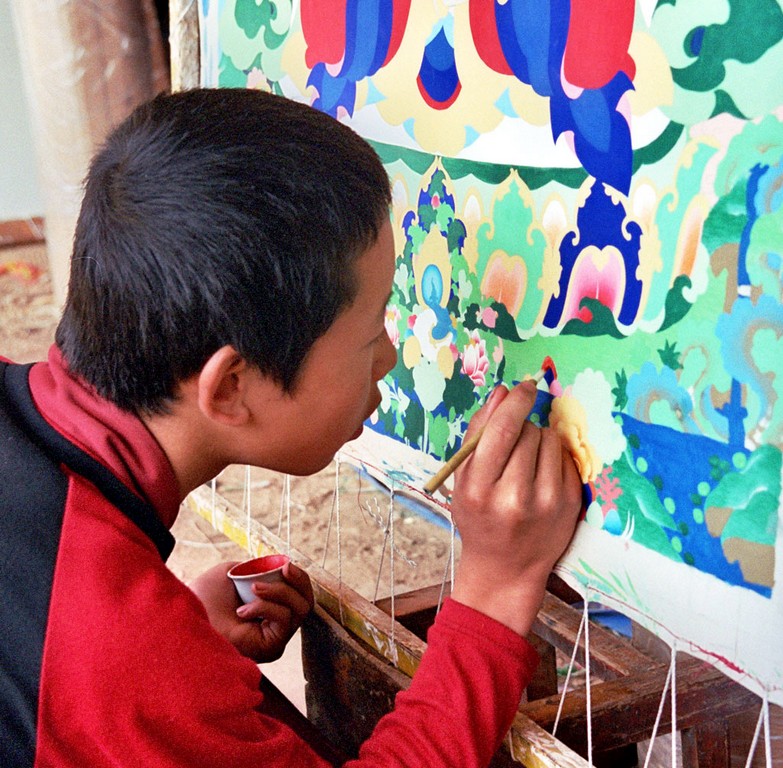
Tongren 同仁 Qinghai Province 青海省
People say that the Thangka Painters of Tongren are the best in the world. Here is how we visited them and saw them make their master pieces.
Xiahe to Tongren
The early morning bus, packed to bursting point with predominantly Tibetan passengers whose clothes exude a penetrating smell of yak butter, climbs cumbersomely out of the monastic town of Xiahe and up onto the wide open grasslands that separate the provinces of Gansu and Qinghai.
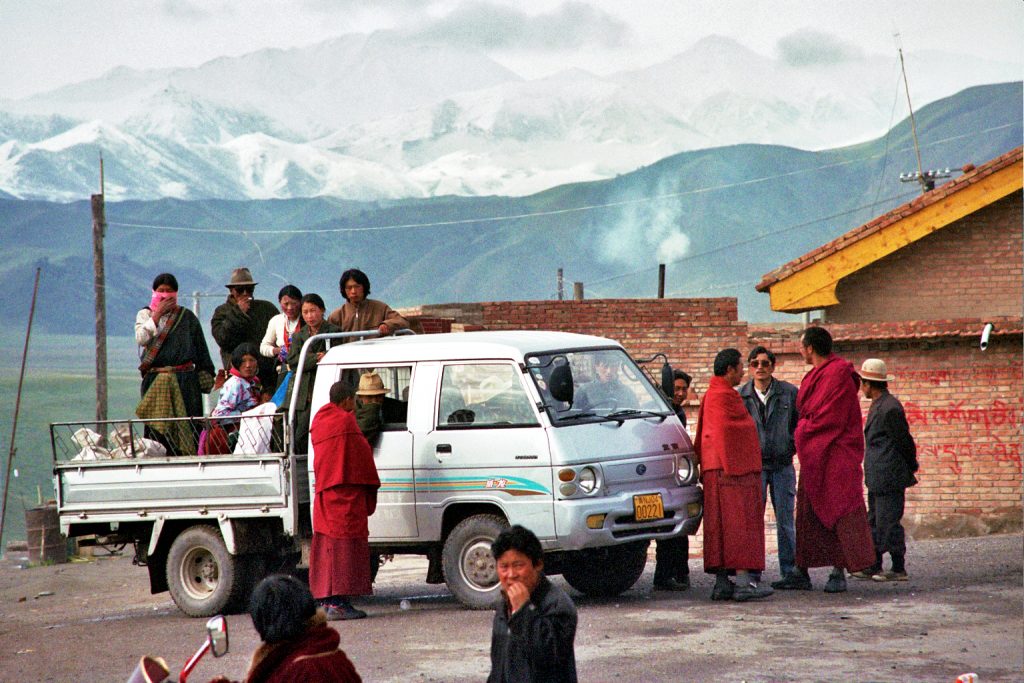
Up there, everything is wetness, emptiness and desolation; the sodden yaks and horses look decidedly miserable, but resigned.
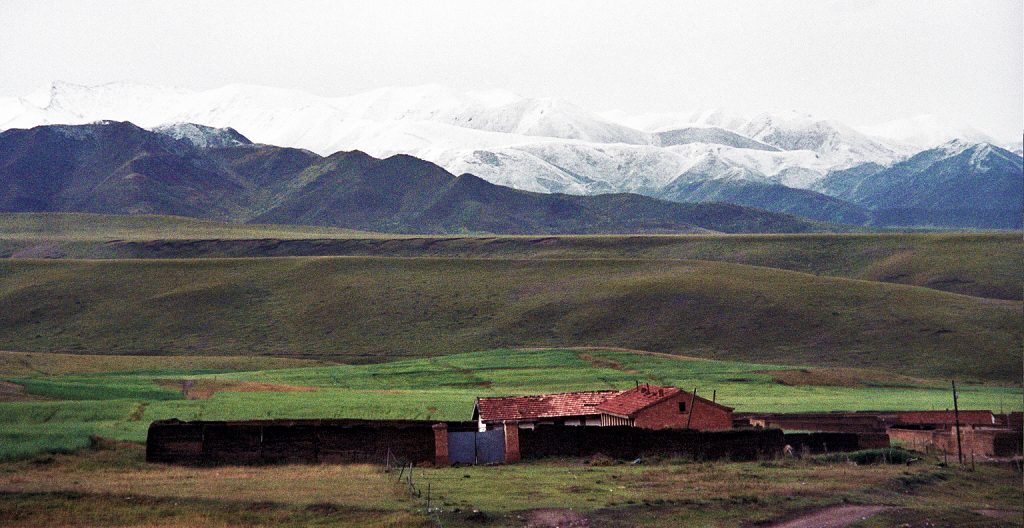
The Tibetan Grasslands
The only sign of human existence are the roaming Tibetan nomads wrapped tightly in their fur-lined greatcoats, their faces swaddled in scarves, their cheeks red and chapped by the biting wind, the rudimentary settlements and the odd small monastic town, which somehow manage to survive in this harsh but stunning landscape.
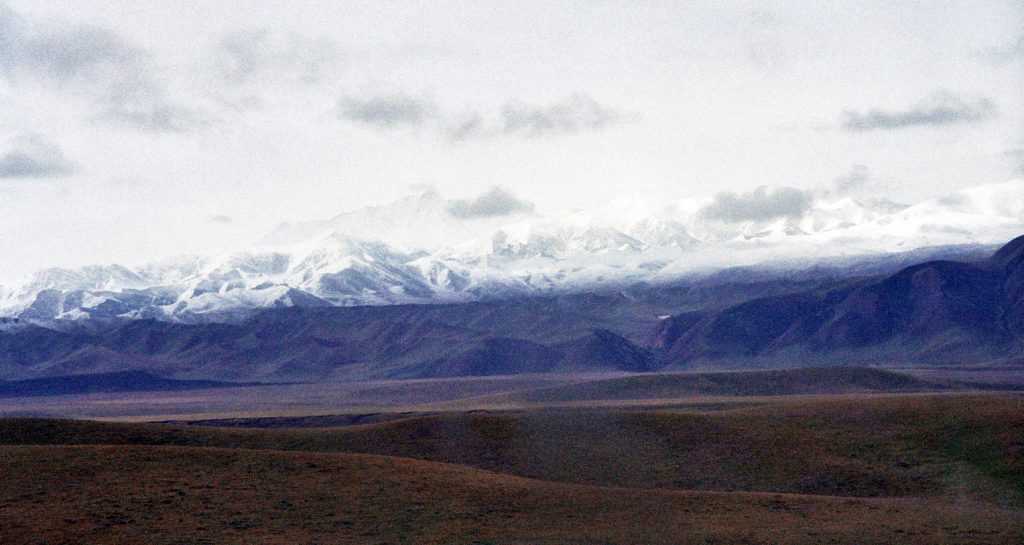
On approaching Qinghai province, huge snow-capped mountains loom in the distance, forming a daunting barrier between the two provinces, and this was only September. Suddenly, when it looks as if our poor old bus will have to scale those giants, the road drops into a dry and barren valley, where herds of goats and yaks often block the way.
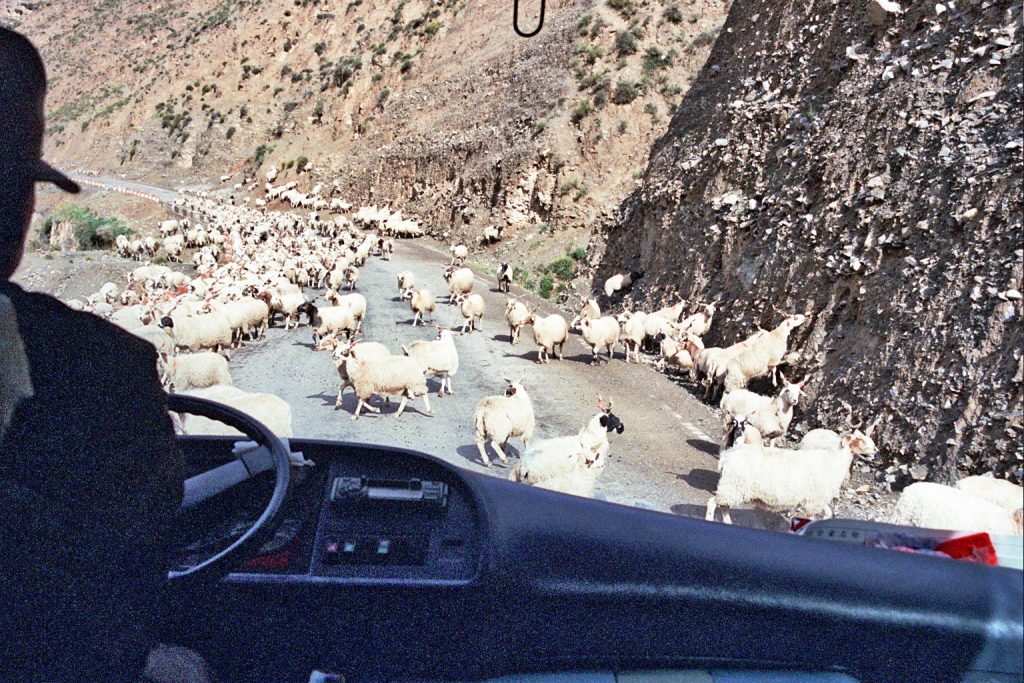
Arrival in Tongren
At the bottom of the valley, along the river, the barrenness gives way to fertile farming land, dotted with neat and prosperous farms and white Stupas. The climate has undergone a dramatic change too and we can see people harvesting everywhere under a warm autumn sun. After about 30 minutes of this rural bliss, the bus rolls into Tongren, a neat and organised modern town.
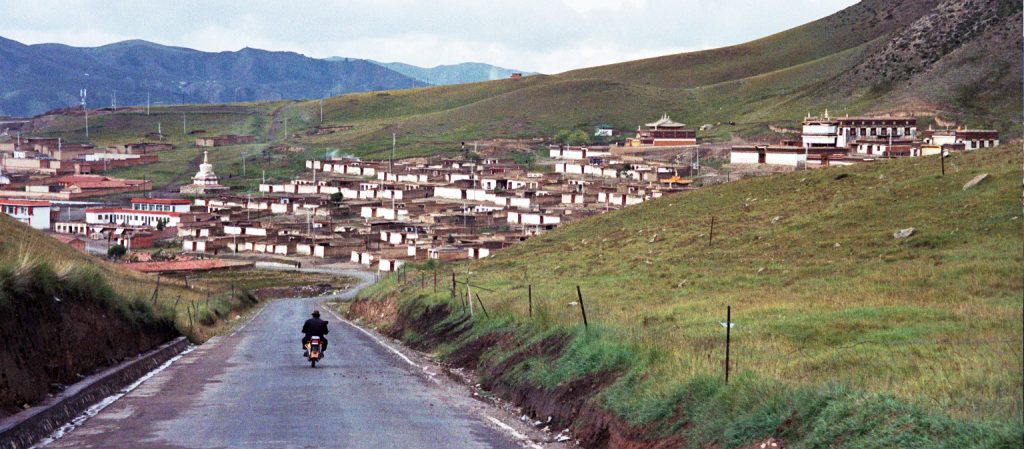
Like most Tibetan towns in Sichuan and Gansu, Tongren is made up of two virtually separate towns; the modern one, housing most businesses, shops and hotels, and the monastic one, centred around the temples.
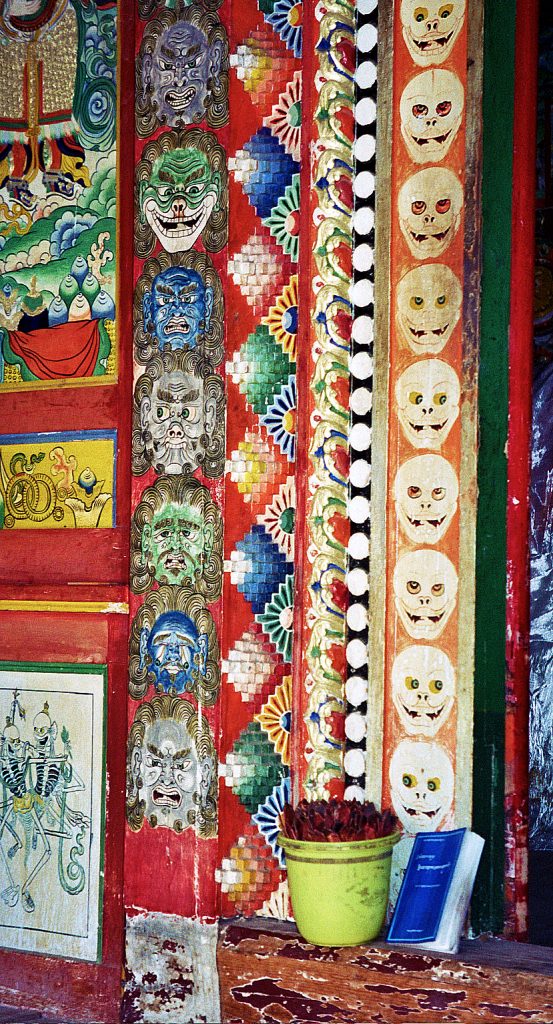
In most cases, this separation also marks the division between the Chinese and Tibetan populations. However, the authorities in Tongren seem to have avoided this kind of cultural apartheid and they have managed to incorporate a large part of its Tibetan population into the modern town
(the modern town has expanded dramatically in recent years).
Longwu Si 隆务寺
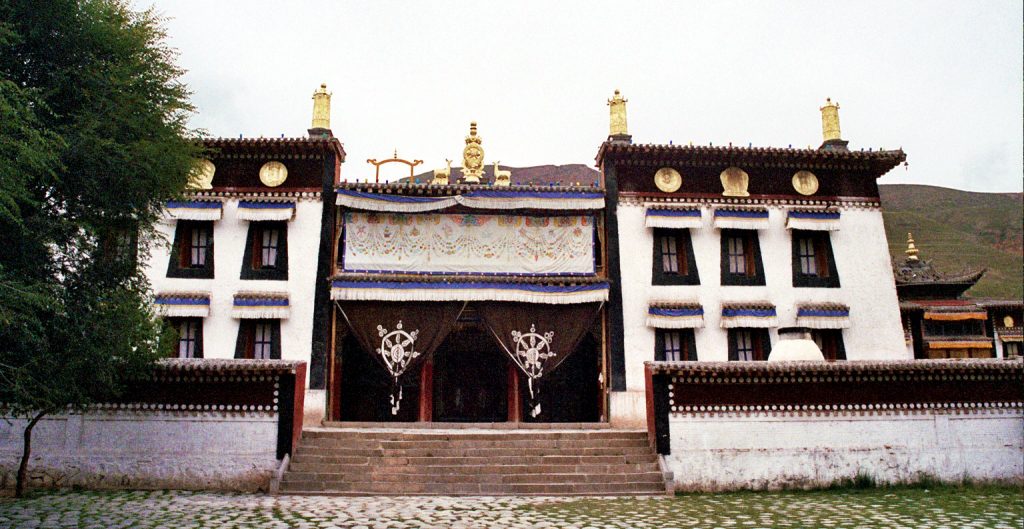
The Longwu Si, or monastery complex, of Tongren is only a short stroll away from the modern centre.
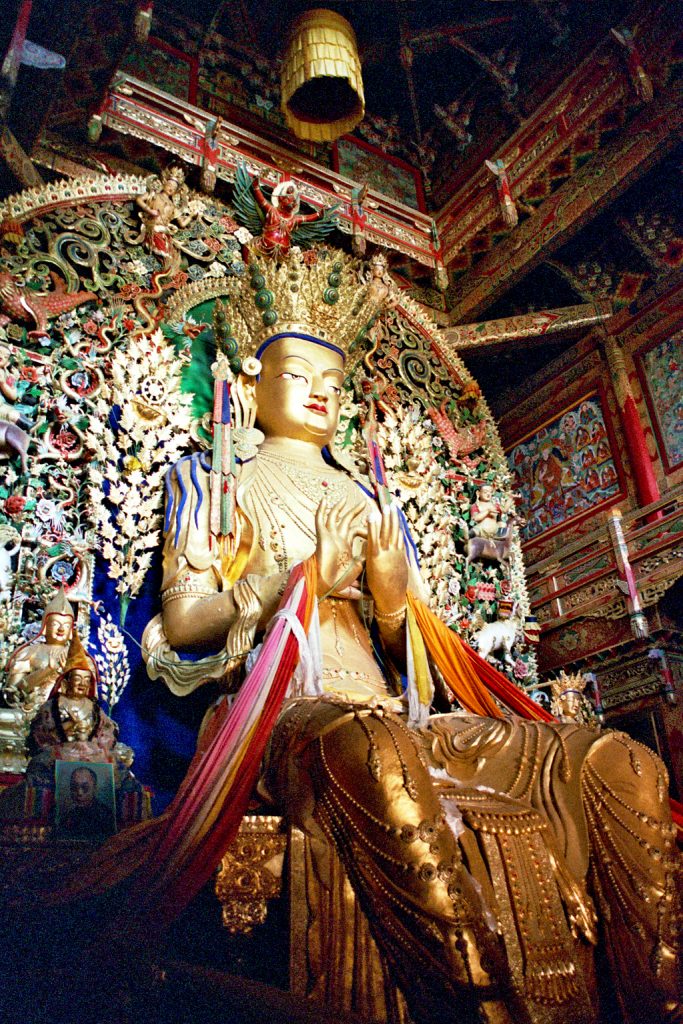
It’s surprisingly large, perhaps as big as Xiahe, but we have it all to ourselves. You can spend a good few hours wandering about this atmospheric place.
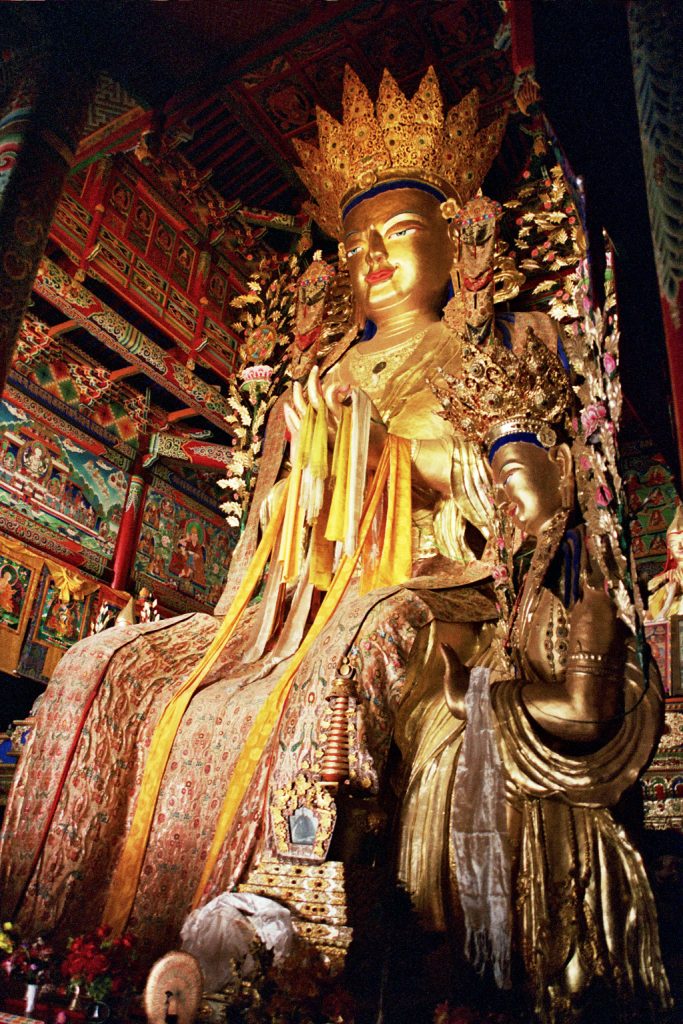
The temples are a mixed bunch of old and new as the complex, having suffered extensive damage during the Cultural Revolution, is currently undergoing some massive restoration.
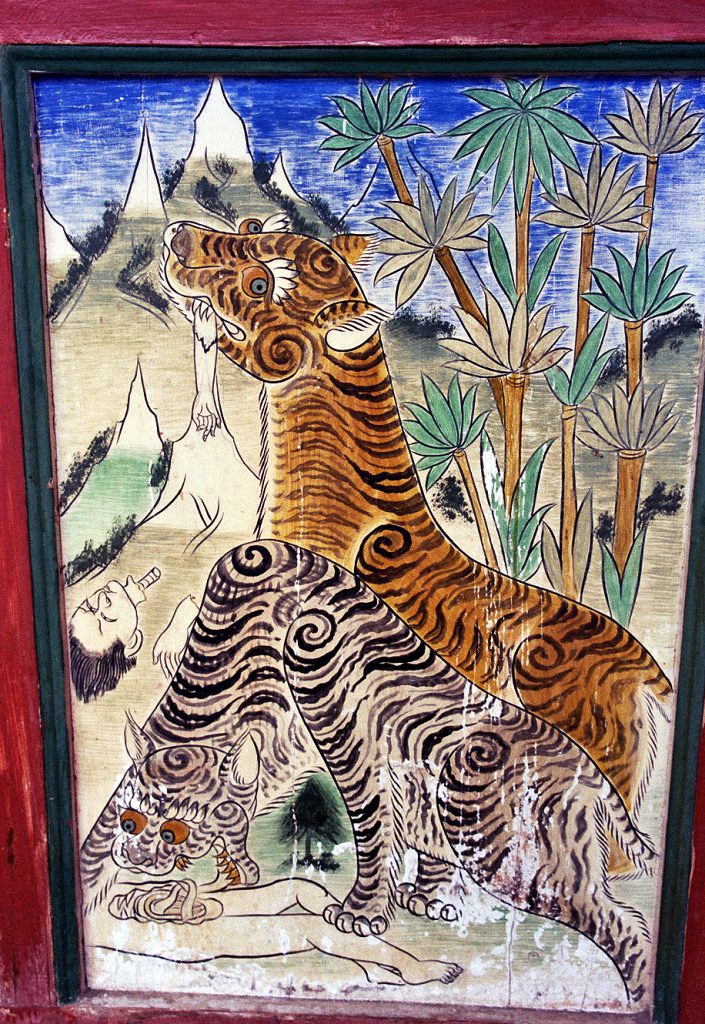
Scenes from the Buddhist Hell
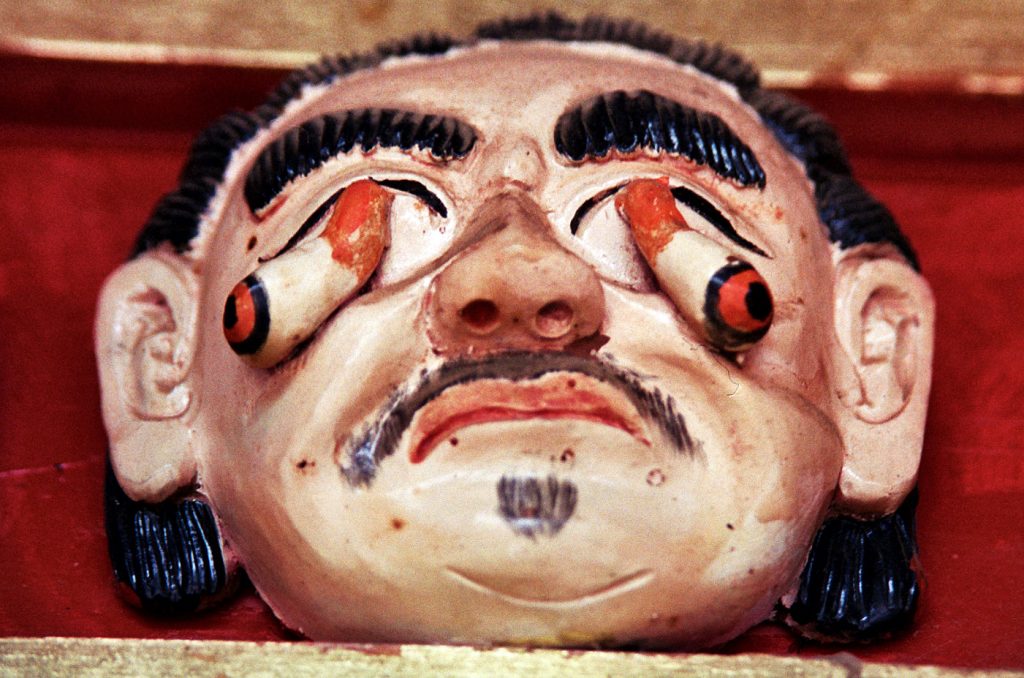
And on a more spiritual note, the small footprints and soft round dents, worn into the wooden floor in front of a particularly venerated Buddha statue by an elderly lama prostrating himself thousands of times…
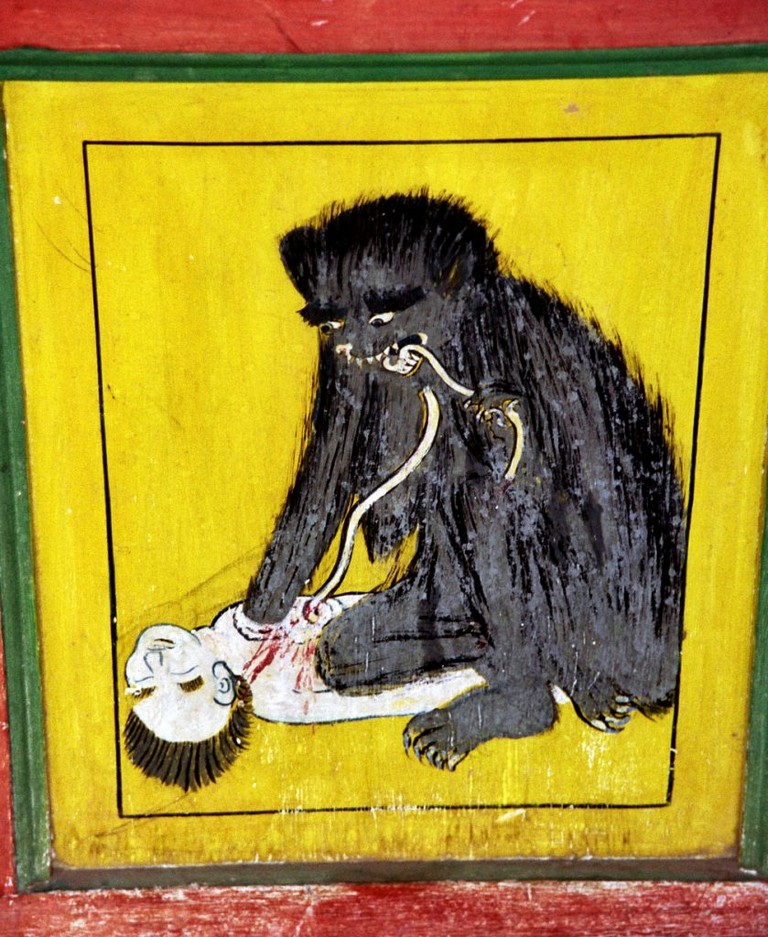
The Tangkha Painters of Wutun Si 五屯寺
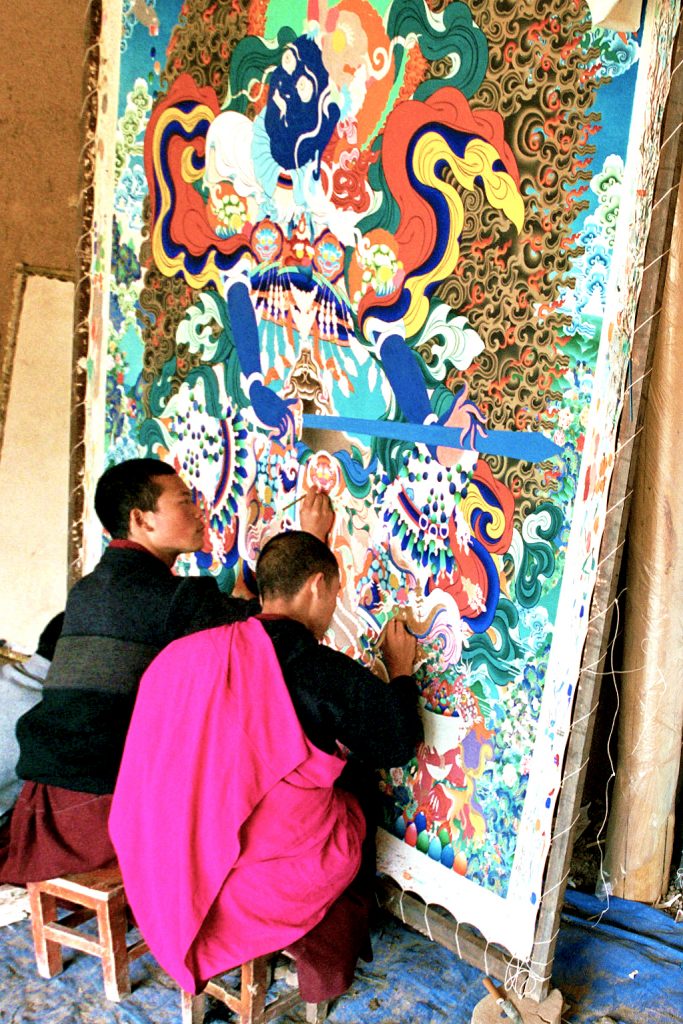
Although the Longwu Si on its own warrants a visit, the main reason for coming to Tongren is to see the Tangkha painters at work in the village of Sangkeshan, some 10 kilometres out of town, and particular in the Wutong and Gouma Monasteries.
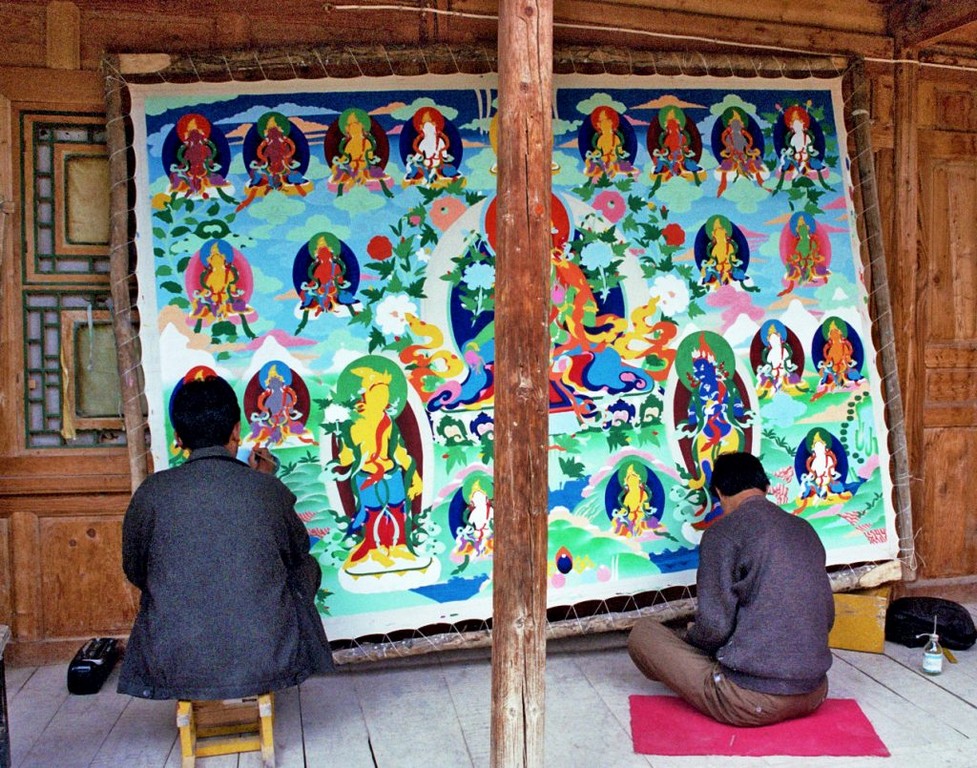
Tangkha’s are Tibetan paintings, mostly of a religious nature, and usually mounted on embroidered and decorated pieces of brocade.
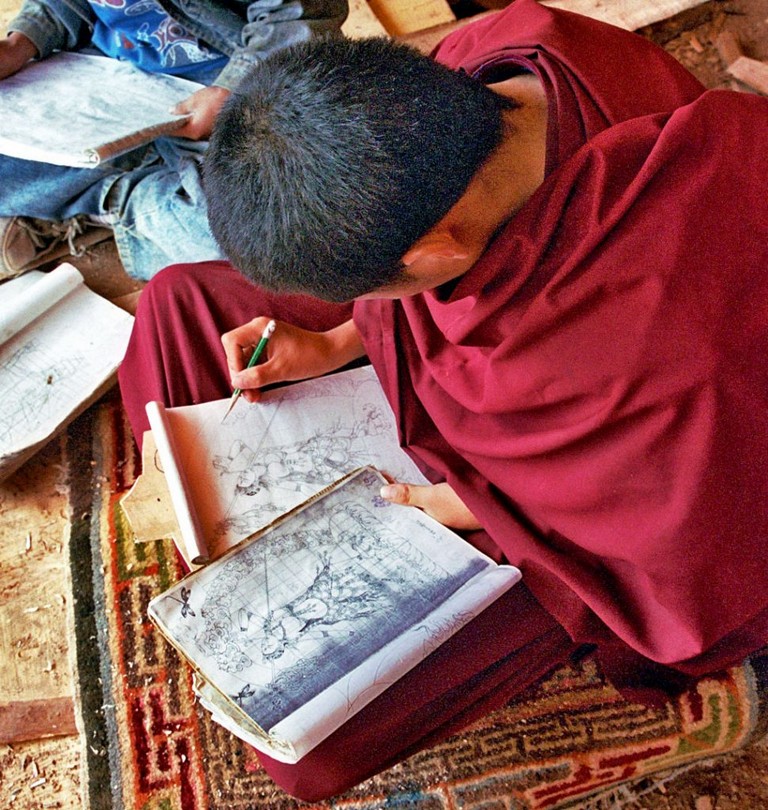
The Tangkha painters of Tongren are rated as the best in the Tibetan world and their art, known as Repkong Art (Repkong being the Tibetan name for Tongren), can be found in the monasteries of Lhasa, Xiahe and many other great Tibetan monastic towns.
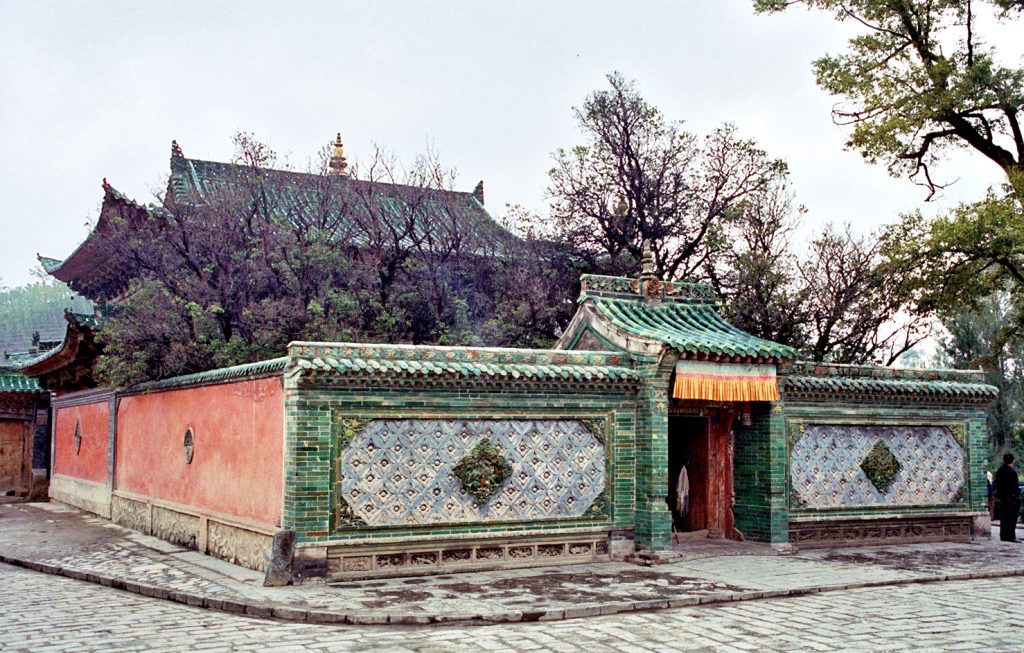
Some of the painters are monks, others are laymen, but they work together in teams, completing orders from far and wide.
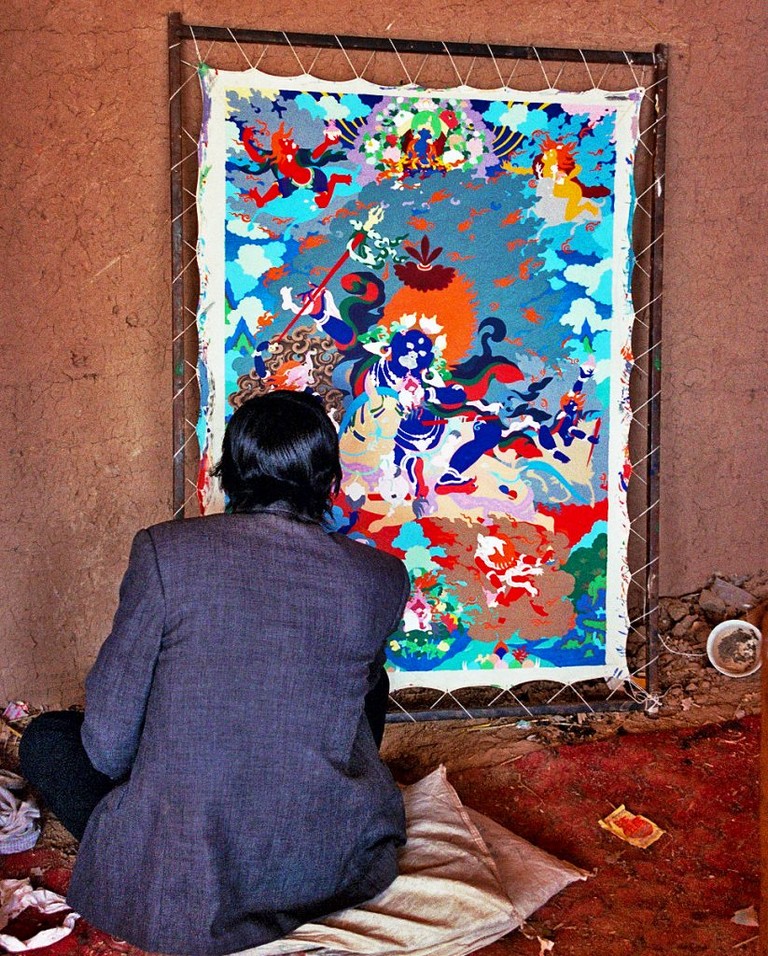
Making Thangkas for various Monasteries
On the day of our visit, some painters at Wutong were working on a large piece for a monastery on Wutai Shan (one of the Holy Mountains of Buddhism), while others were completing an order for the Ta’er Si temple near Xining, the capital of Qinghai province.
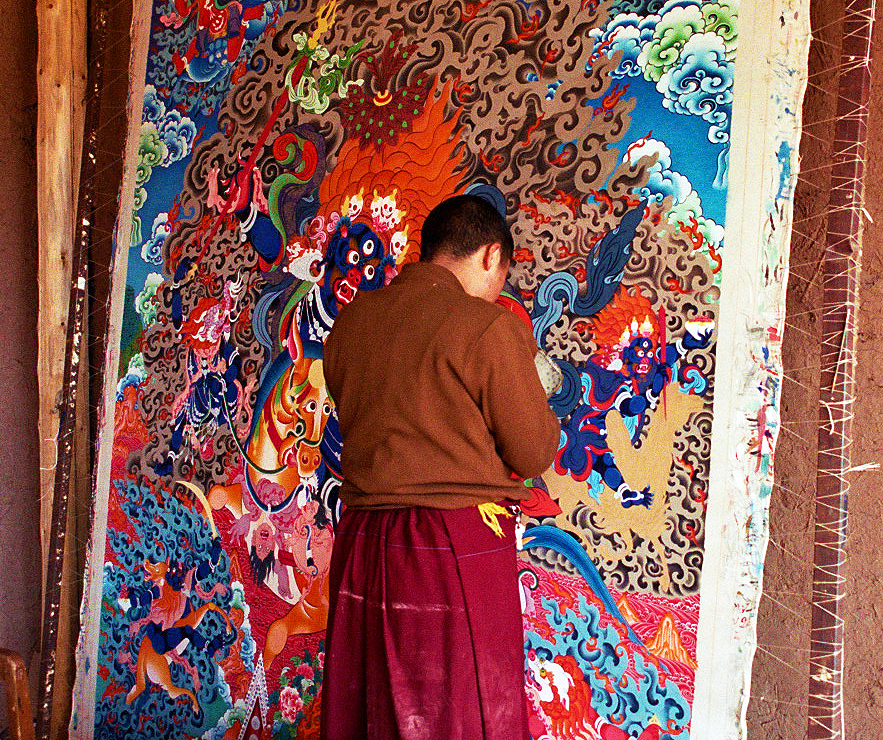
Meanwhile, some of their colleagues at Gouma were finishing a Tangkha for the Yushu monastery, in the remote northern part of Qinghai province.
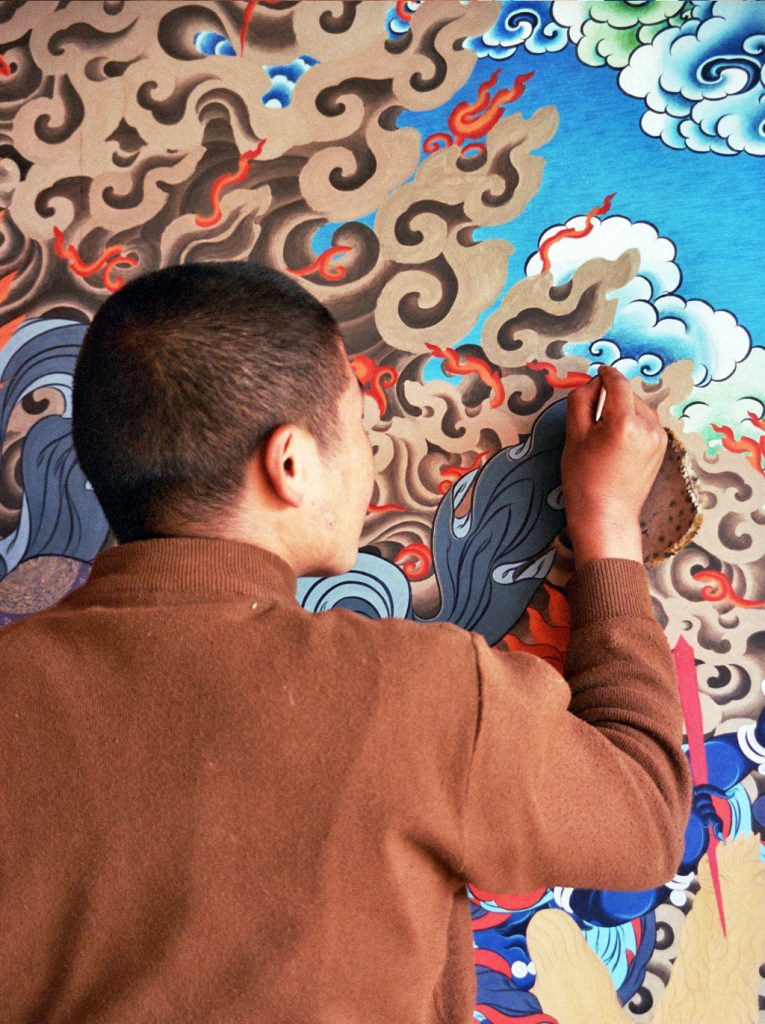
Buying Thangkas in Tongren
Apart from offering you a chance to see the painters and their apprentices at work, and to buy one of their smaller pieces, both monasteries are well worth having a look around.
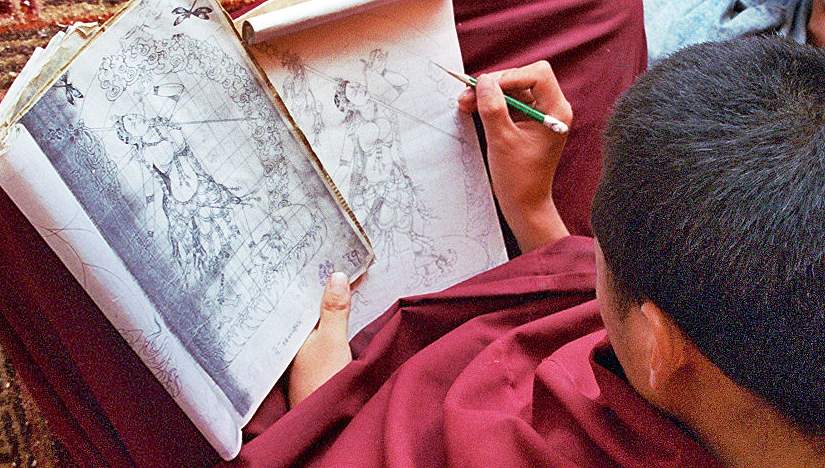
The main hall of Wutun Si 五屯寺is a splendid affair which houses three large golden statues, dressed in colourful embroidered robes, as well as many valuable paintings.
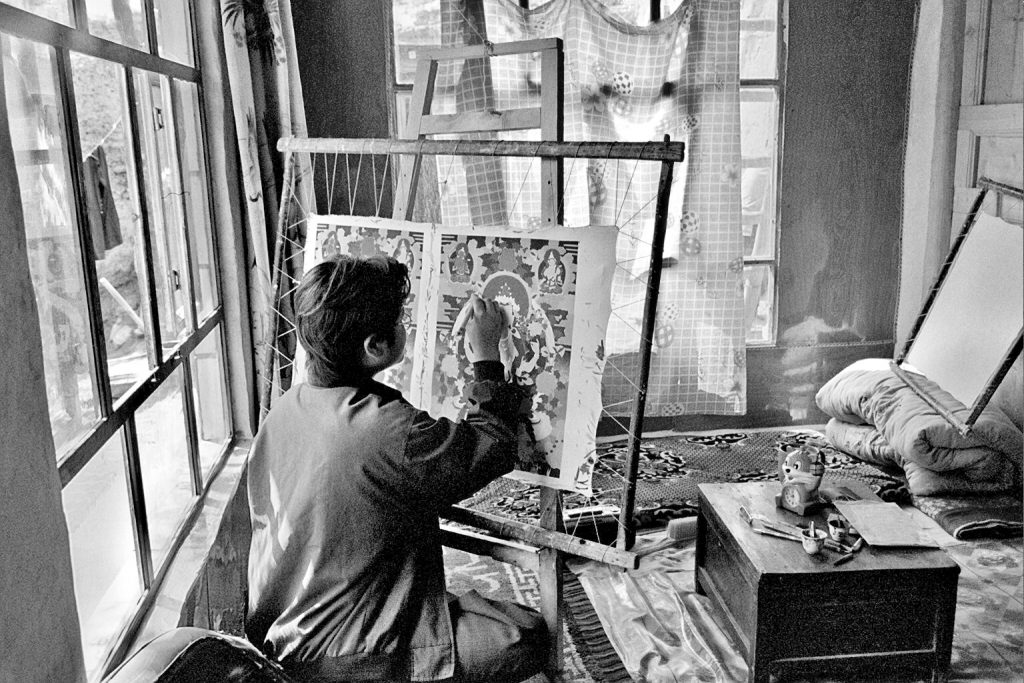
The monk showing us around explains how they managed to save these paintings during the Cultural Revolution by turning the wooden panes around, hiding the valuable paintings at the back and displaying some newer, relatively worthless ones for the Red Guards to destroy!
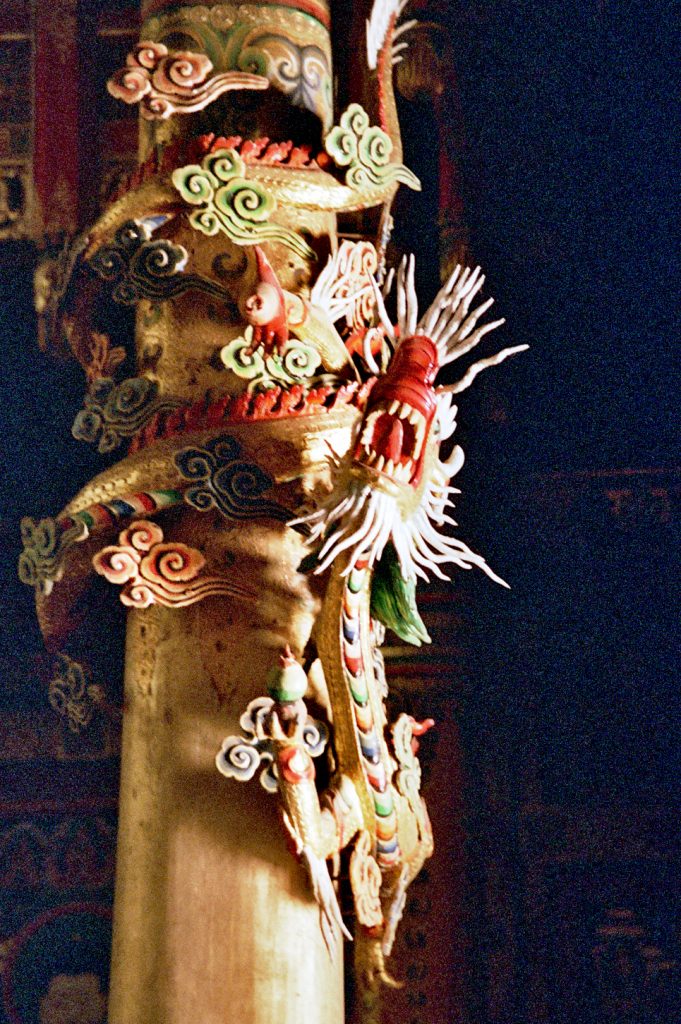
Other prominent features of the Hall are the fierce dragons coiling their bodies around the pillars and the heavy entrance doors, exquisitely restored and decorated in red and gold by a trembling octogenarian monk with his glasses tied to his head.
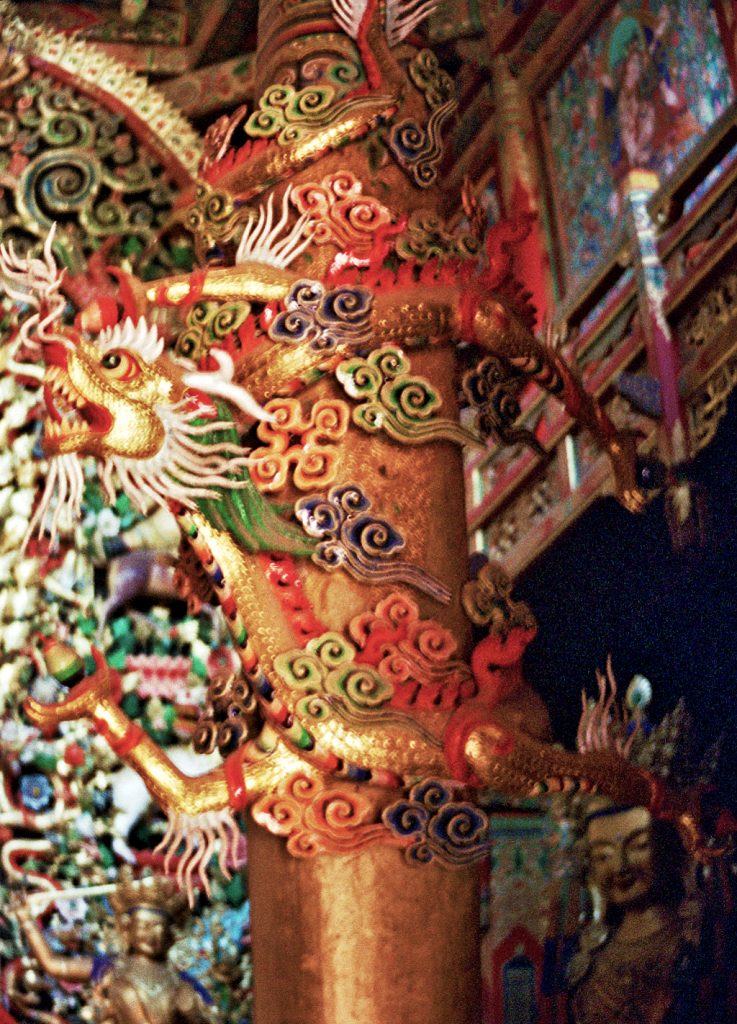
Restoration
As we had already witnessed at Longwu, renovation, restoration and even expansion are at full swing at the Wutun Si monastery 五屯寺: a new Stupa is being erected, as well as a new temple hall.
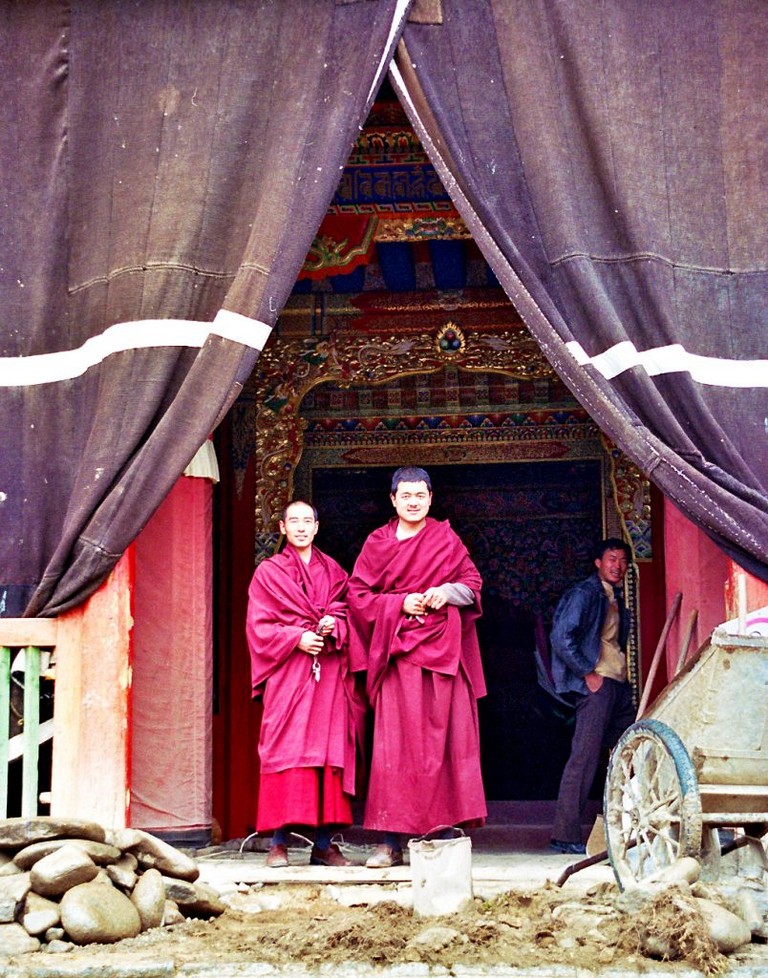
A group of workers is busy assembling the central clay sculpture, which has not been painted yet either.
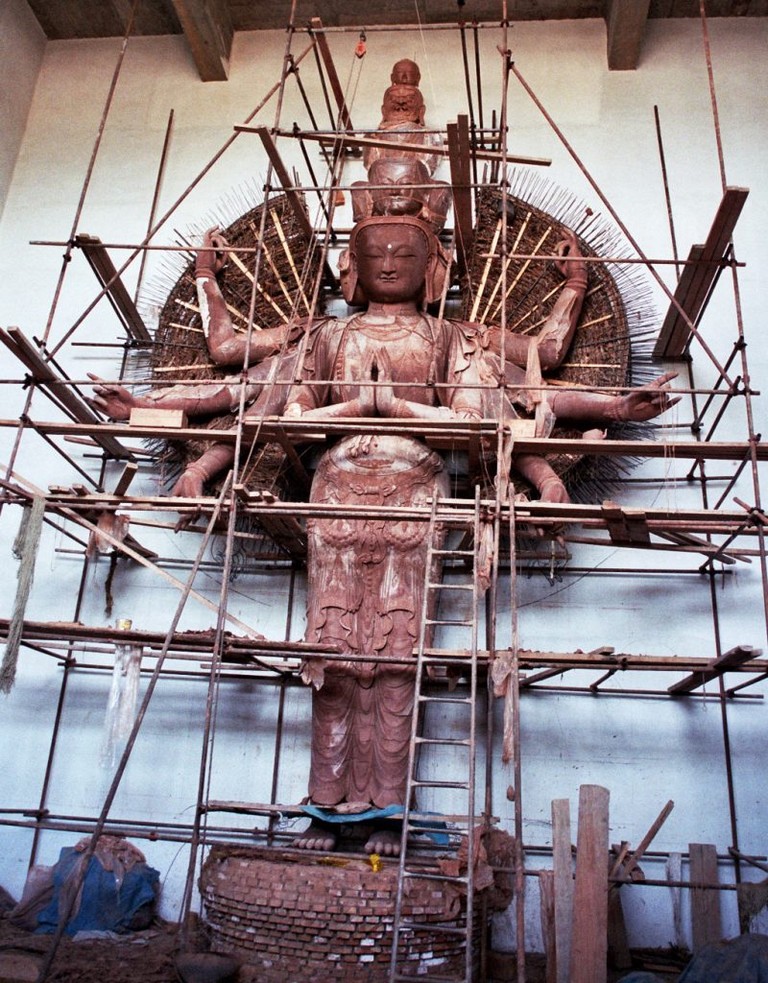
This whole process of temple renovation and revival is evident all over China; on the one hand many people are returning to their former beliefs, while on the other hand the government once more tolerates Buddhism and even encourages the restorations, as another way of obtaining tourist revenue.
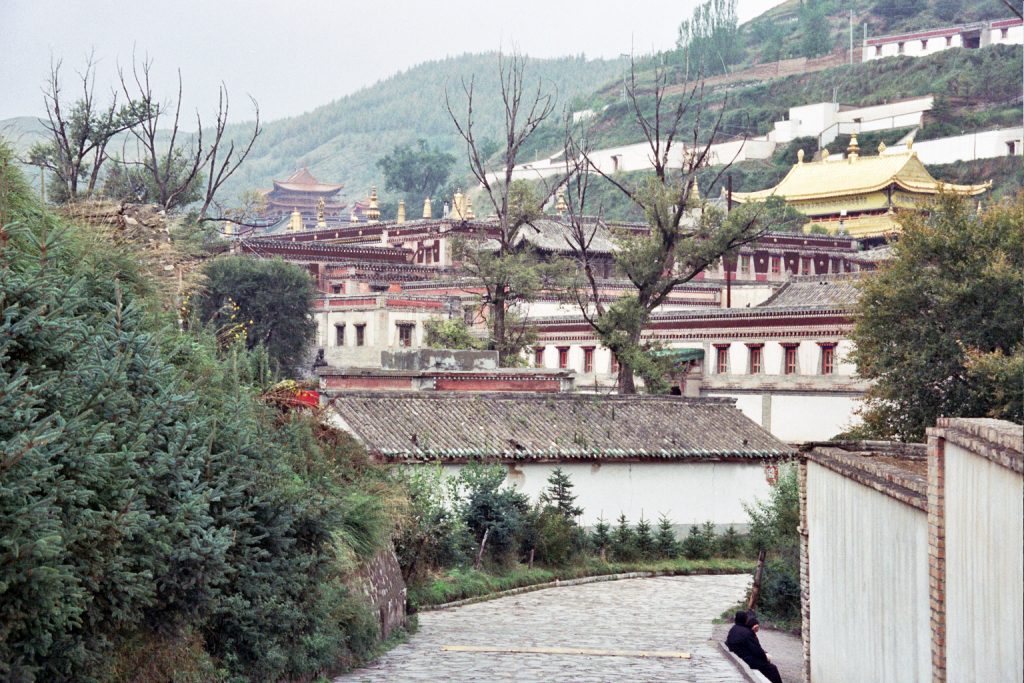
Gomar Gompa
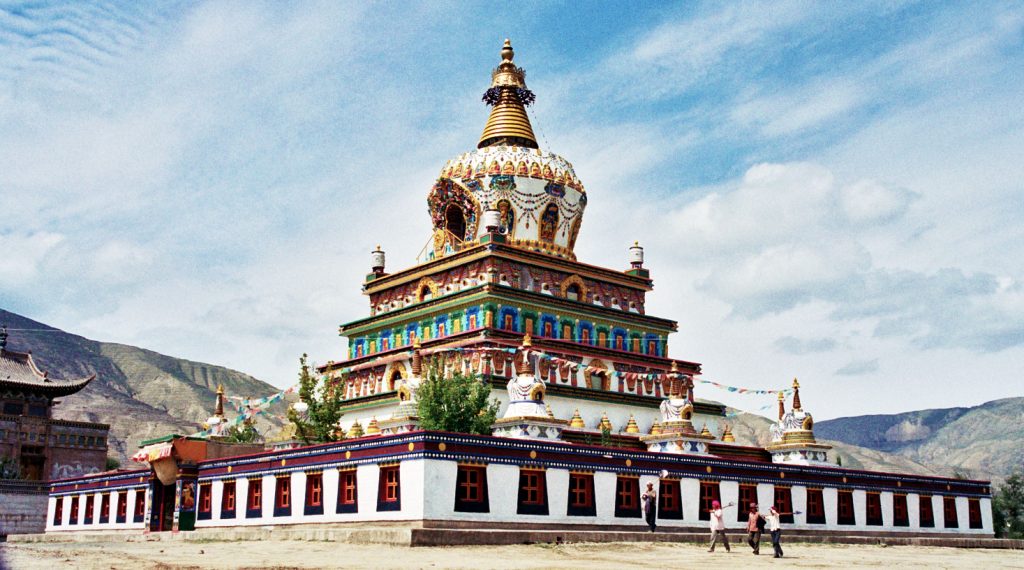
The likewise brand-new and shiny Stupa just outside Gomar Gompa, a few kilometres away on the other side of the valley, is a colourful multi-tiered structure that stands out against the barren hills.
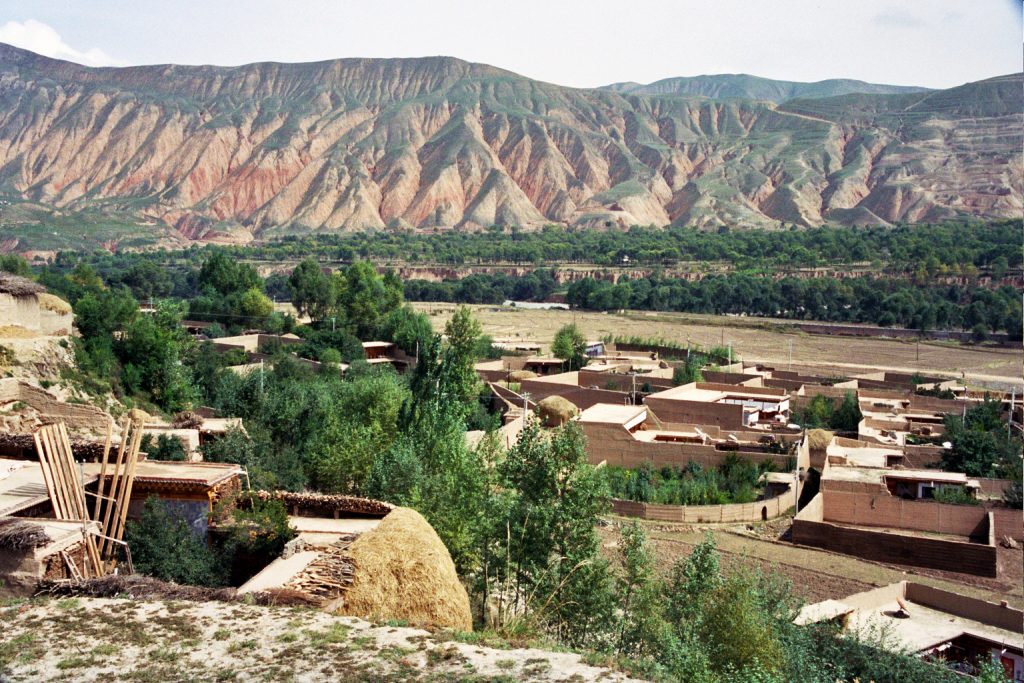
Up close, you can appreciate the intricate decorations in bright red, blue, green and yellow colours.
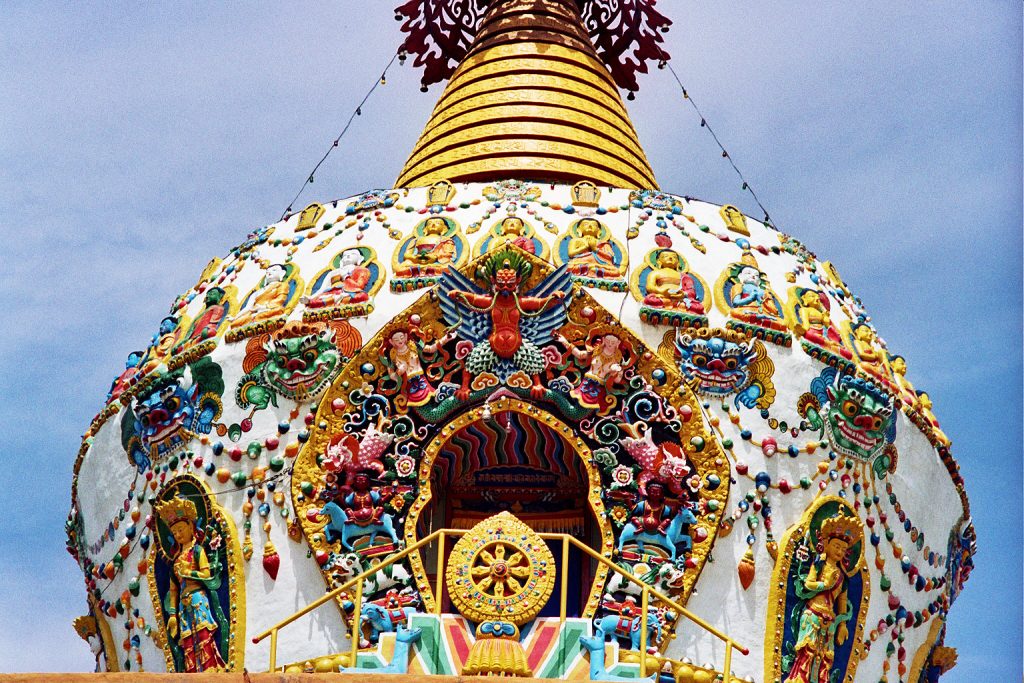
The monastic buildings are right behind the Stupa and if you wander around its quiet streets for a bit, you are most likely to be invited into one of the intimate courtyards where the painters work.
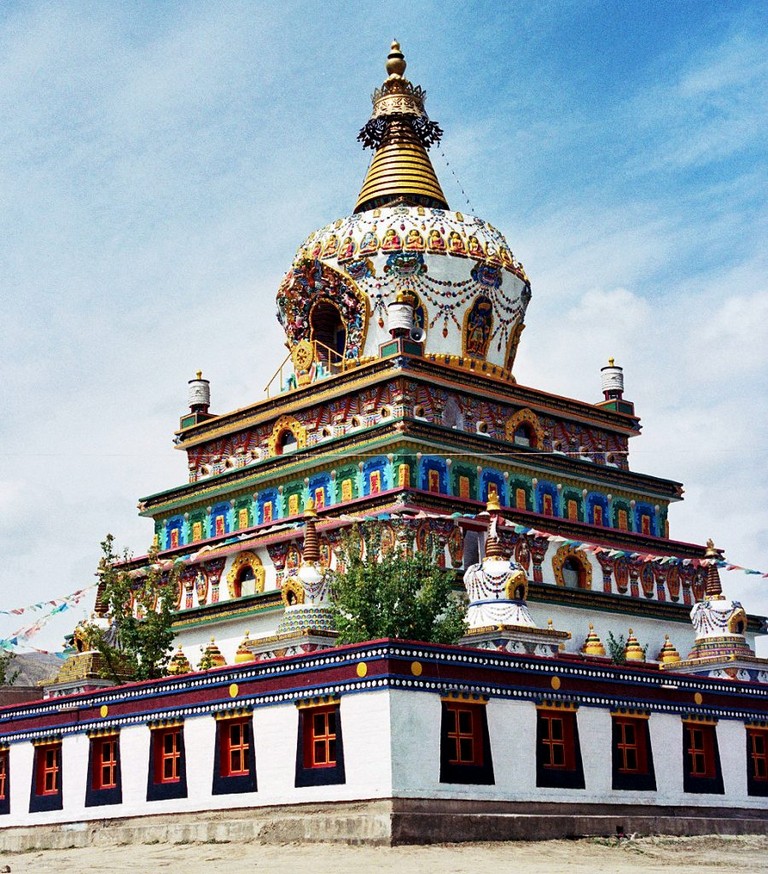
Other Products Made in Tongren
Besides Thangkas, the monks, artists and artesans of Tongren also produce clay sculptures, as well as hand-sewn cloth wall-hangings and cloth frames for the paintings.
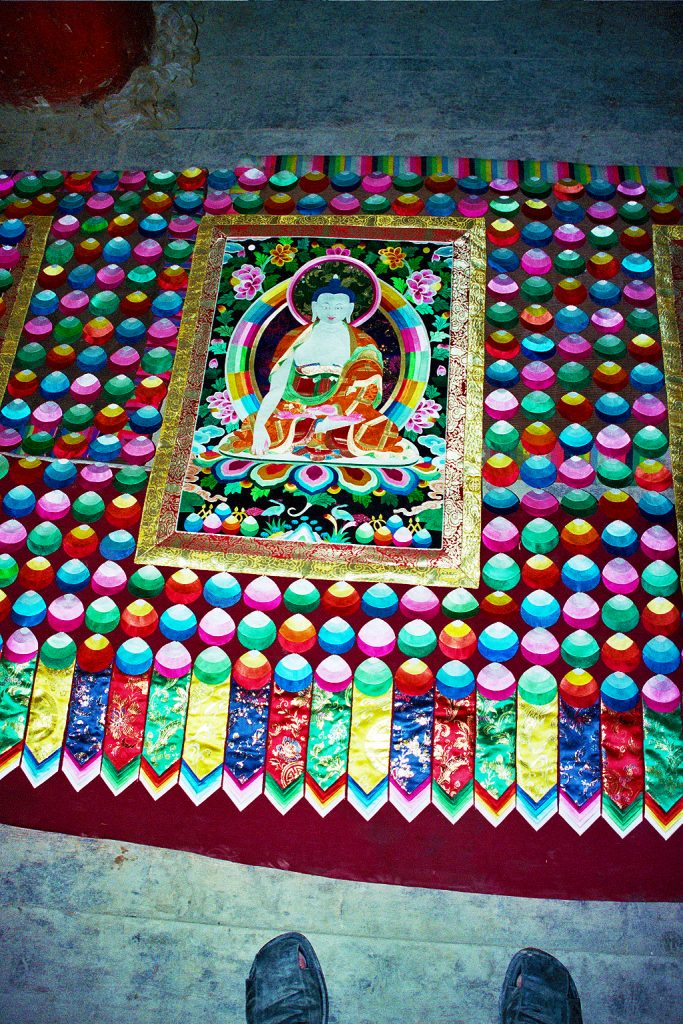
Some of these wall-hangings are made up of countless, brightly coloured cloth circles that are held together not only by sewing, but with the help of glue and staples as well.
One of the best places to witness the creation of these curious pieces is the Nian Tou monastery, a few kilometres outside Tongren.
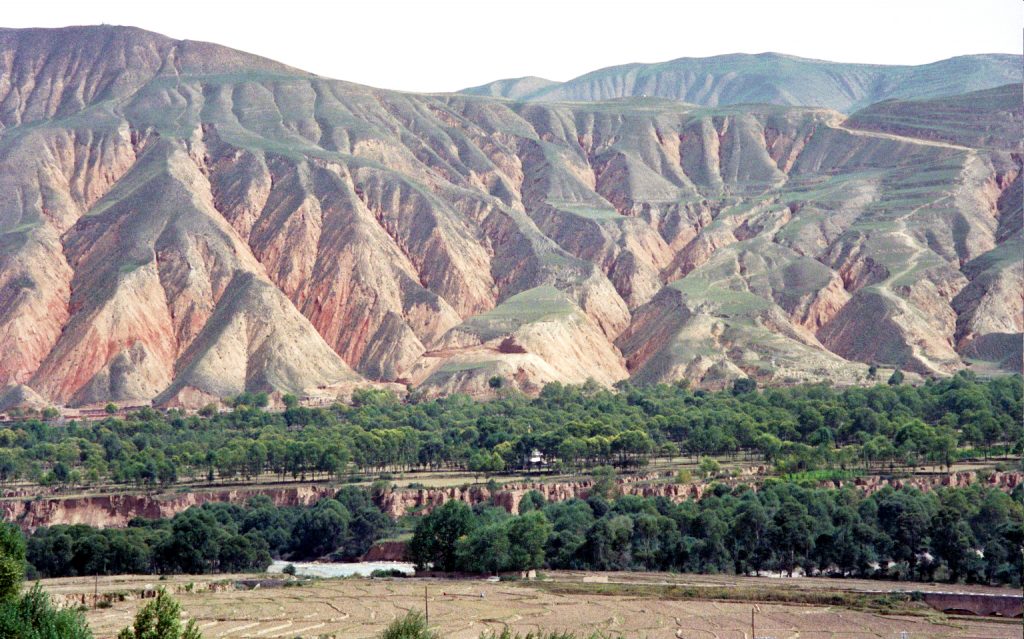
In the Huangnan Tibetan Autonomous Prefecture, all around Tongren County, there are many other remote monasteries, some of them only accessible with a four-wheel drive vehicle. Locals even told us about a monastery, some 40kms away, supposedly inhabited by a sect of long-haired monks! Whether this story is true or not, the area most certainly has plenty of places left to explore.
Practicalities:
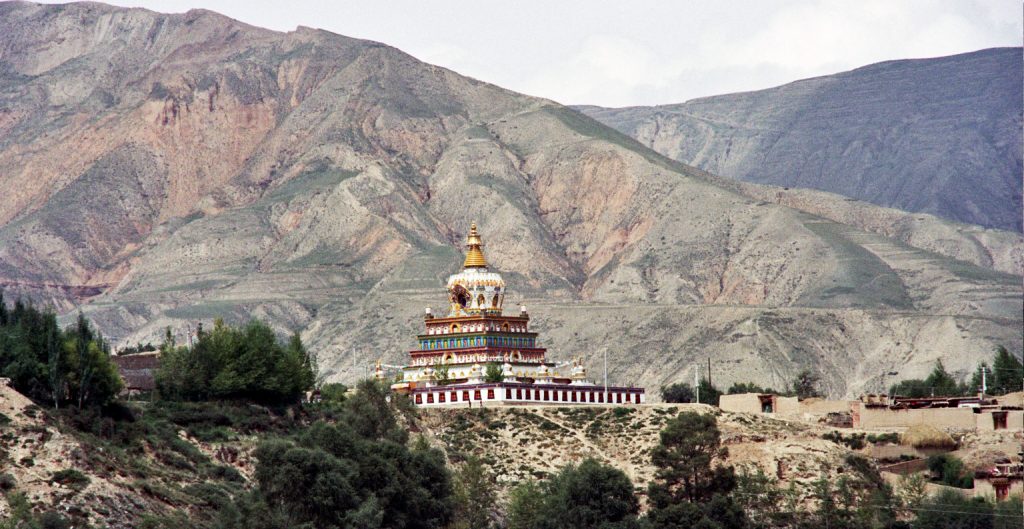
Where to Stay and Eat:
We stayed at Huang Nan Binguan, an old but cosy hotel set in a shady courtyard, where we paid 100 Yuan for a slightly worn, but clean double. Incidentally, the new Huang Nan, a glass-fronted dark monstrosity on the main road, is infinitely worse than its older counterpart. There are several other, cheaper options in town too.
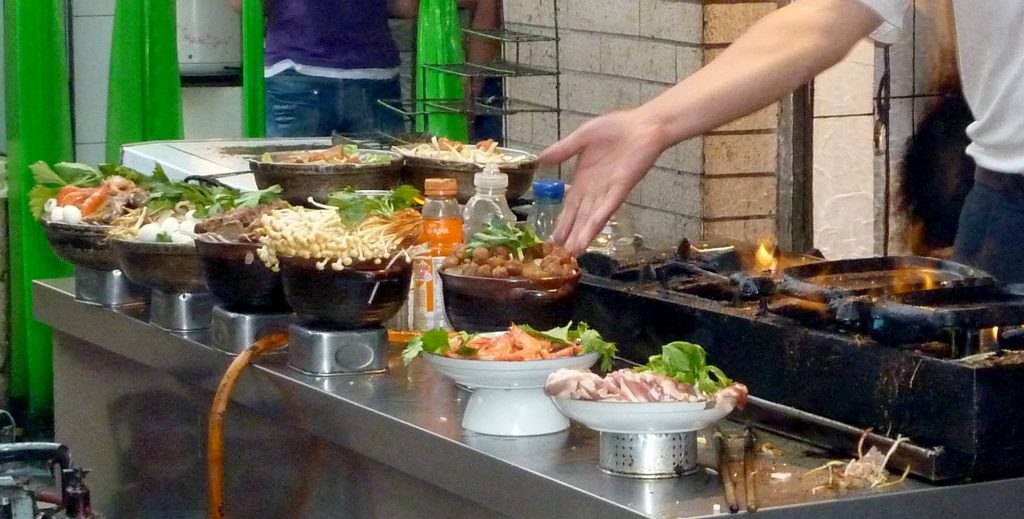
For food , try the “Sha Guo” restaurant a few doors down from the hotel. A “Sha Guo” is a delicious clay pot soup, which can have many different ingredients, such as meat, fish, vegetables and eggs. Washed down with a couple of cold beers, they make for a satisfying and filling meal after a long day sightseeing.
Getting Around:
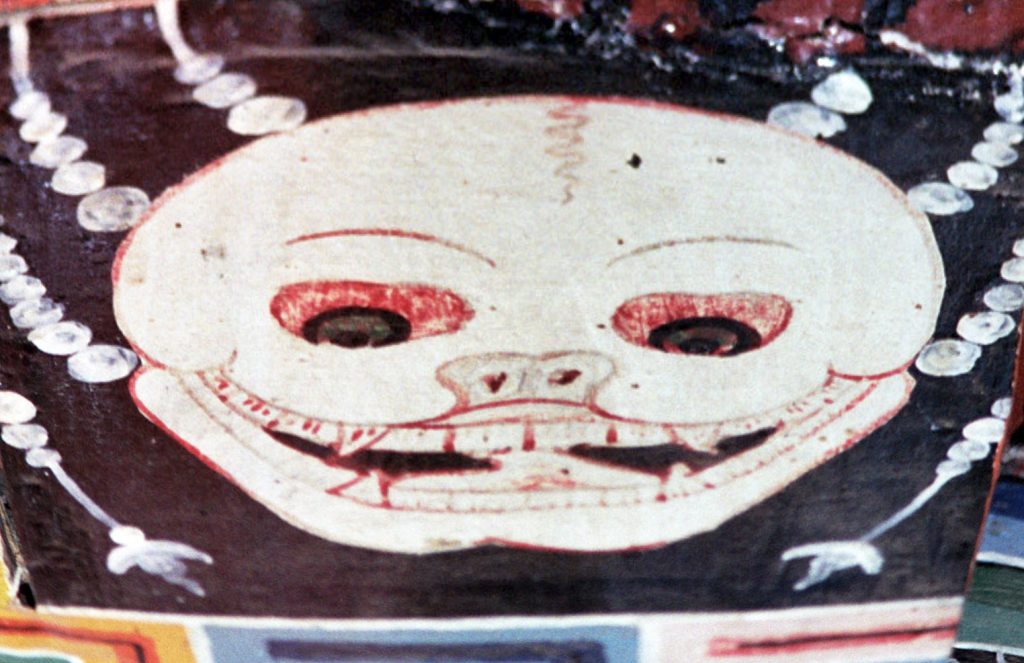
Hiring a taxi to take you out to Wutun Si 五屯寺 monastery costs about 10 Yuan. Getting between the various monasteries, or back into town, there are plenty of mini-vans plying the route.
Coming and going:
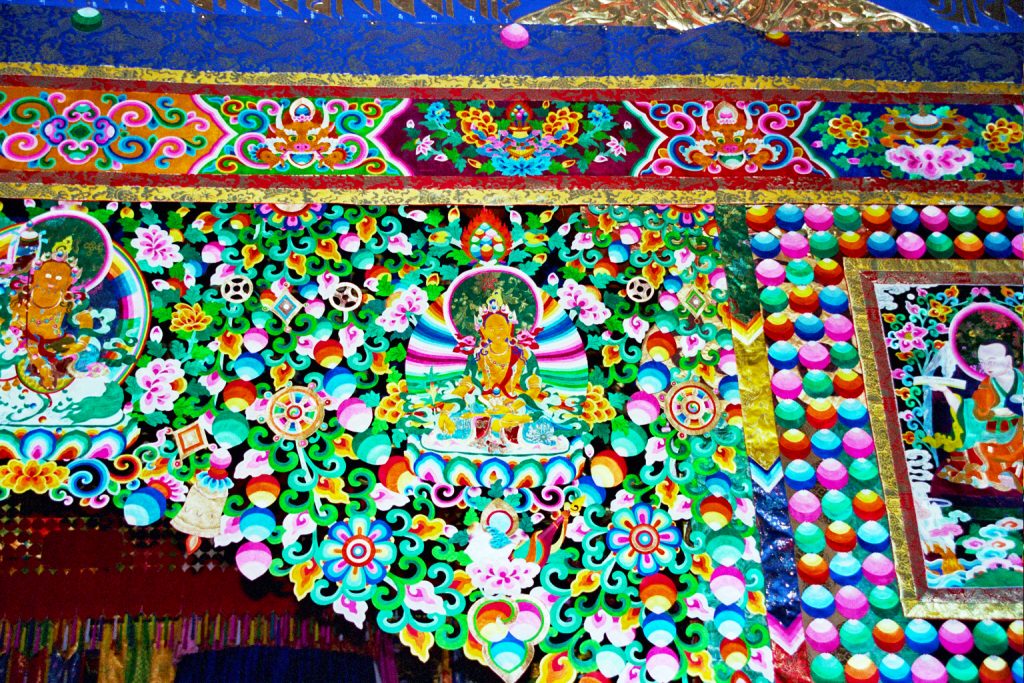
In 2004 (was still the same in 2012), there was one bus a day leaving Xiahe at 7.30, plus another one with a similar timetable coming from the other direction. Leaving from Xiahe, it may be a good idea to book a day in advance, as our bus was absolutely packed. The journey takes about 5 hours and the scenery on the way is spectacular. Beware that the weather can be cold and treacherous; we even had snow in early September.
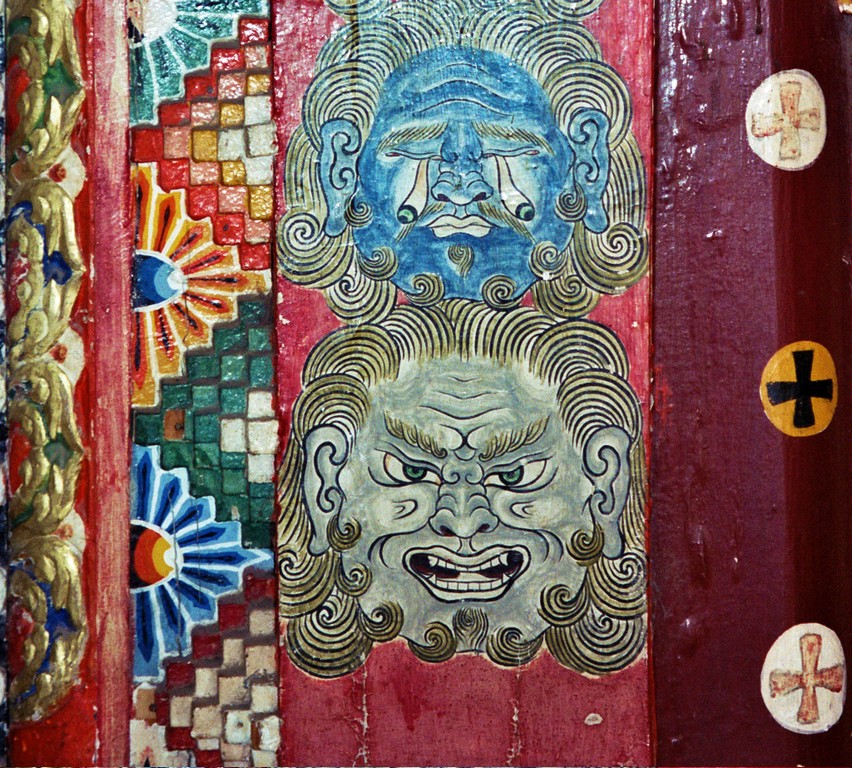
Moving on, there are numerous buses leaving for Xining throughout the day. The journey, which is fairly boring, takes between 5 and 6 hours.




